














By Rachel Herzog
It’s become a common phenomenon: Stymied by the challenges of building in Chicago over the last few years, local developers have branched out of their hometown and set up shop in sunnier locales like Phoenix and Nashville, Tenn.
“What we’ve seen is, Chicago has a lot of really strong, well put-together and sophisticated development groups that used to make a living in Chicago. They can’t make a living in Chicago,” said Craig Pryde, a principal in the Chicago office of national architecture firm KTGY.
More robust population growth and a political environment that they see as friendlier to development makes branching out South and West a better bet, some developers say. On the flip side, those who can build in Chicago stand to benefit from meeting the
demand for housing in a supplyconstrained market.
Belgravia Group, a residential developer with decades of experience in Chicago, entered the Arizona market in 2022. It’s a move Chairman Alan Lev said was necessary for the company to thrive as construction costs rose at a much faster rate than rents did in Chicago, on top of elevated interest rates making deals even harder to pencil out.
“About three to four years ago, I came to the realization that — or came to the sad conclusion that — we weren’t going to be able to sustain the same level of business in Chicago that we had been doing for the previous 35plus years,” Lev said. “I wanted us to stay in business, and I was afraid that I wasn’t going to be able to do enough in Chicago.” Lev said there wasn’t a



FGreg Hinz
or Rahm Emanuel, it was the murder of Laquan McDonald that haunted his latter months in office, leading to his eventual departure from City Hall. For Richard M. Daley, it was the poorly considered decision to sell the city’s parking meters to a private company. For Lori Lightfoot, it was the wellearned reputation that she could convert even the closest friend into a bitter enemy. Such a critical moment of reckoning now has arrived for Chicago’s newest chief executive. In creating utter chaos at Chicago Public Schools to pursue an agenda most strongly held by his political patron, the Chicago Teachers Union, Mayor Brandon Johnson is rolling the dice on his political future as he nears the run-up to his presumed re-election race. Maybe the gamble will pay off. But taking a page from the book of Donald Trump — to forget or
malign your critics and play strictly to your base — is a dangerous, divisive political strategy. And it’s not at all good for Chicago.
In recent days, Johnson has made it clear he wants Pedro Martinez removed as CEO of the school system. Johnson wants to fund raises for CTU members and drum up money for his own budget by getting CPS to borrow hundreds of millions of dollars. Martinez and the Board of Education have balked, citing the high cost of borrowing to an already heavily indebted system and a fact of basic government finance: Borrowing long term to pay for short-term operations is a road to ruin.
Johnson and the CTU consider that viewpoint treason. By all indications, they want to create a financial crisis at CPS, a crisis that they can use to pressure lawmakers and Gov. JB Pritzker into writing the schools system a billion-dollar bailout check.
The pressure almost certainly won’t work. Writing CPS a check also will require writing big checks to suburban and downstate schools — and quite possibly a state
income tax hike to pay for it all. But with lots of flowery language about how poor minority kids are being cheated of a decent education — and few words about how teachers who now make an average of almost $100,000 a year are demanding a 9% minimum wage hike for each of the next three years and a shorter instructional day in their new contract — the CTU and Johnson are persisting.
Given all that pressure, the current Johnson-appointed board resigned en masse. They’ve had enough. Johnson last week named a replacement board to take office immediately and presumably oust Martinez, approve the loan and OK a sweetheart contract with the CTU — all of this before a new, partially elected board can do anything about it when it takes office in January.
Johnson in comments last weekend says he’s just trying to implement the school reform promises he made when he ran for mayor. But a lot of other folks argue that creating chaos, disempowering voters and asking board members to vote contrary to their conscience
is not what Chicago wants.
“Chicagoans deserve a voice. A school board full of lame-duck appointments . . . is not what is in our best interest,” more than 40 members of the City Council said in an open letter.
"The management stability, educational quality, and financial state of the Chicago Public Schools are critical to both the short and long-term prospects of the children and families of Chicago as well as the success of Chicago businesses of every size and the long-term economic future of our city,” the Civic Committee of the Commercial Club said in a statement urging Johnson to back off.
Instead, it appears to be “fight, fight, fight!” time for Johnson.
It’s not the first time this mayor has failed to realize that his job of mayor for all of Chicago is to represent all of Chicago, and not just his ideological soulmates. Especially on highly radioactive subjects.
You saw it when Johnson insisted on dumping the ShotSpotter system, despite pleas from no fewer than 33 aldermen worried about
safety and preserving life. You saw it when he insisted on naming as his chief aide for governmental relations a woman who two days after Hamas massacred hundreds of Israelis proclaimed on social media her support for a “free Palestine . . . from the river to the sea,” a stance many Jews consider akin to abolishing the state of Israel. And you saw it when Johnson’s press office issued a statement about the Board of Education resignations, saying he’s “focusing on Black Student Success.” Not a word about success for Latinos or children of Ukrainian refugees. Or others who have had a difficult life and need extra help to get started in school. We’ll see if it works. Some sense a certain devil-may-care attitude at City Hall that posits that once Johnson and the CTU write that nice new contract, future mayors and school boards won’t easily be able to undo it. Others see plummeting CPS bond ratings, educational chaos and protests from already over-taxed Chicagoans. When the history books write about Johnson’s tenure, this will be a pivotal moment.
Jason Stenta brings Optum and CVS Health experience to the Deerfield-based chain as it struggles with its health care strategy
By Katherine Davis
As Walgreens Boots Alliance grapples with a complex and flailing health care strategy, the Deerfield-based pharmacy giant is bringing on a new chief commercial officer with experience at United Health Group’s Optum and CVS Health.
Jason Stenta began his role on Oct. 7, reporting to Mary Langowski, who was appointed Walgreens’ president of U.S. health care in February.
As chief commercial officer, Stenta is tasked with leading Walgreens’ commercial growth strategy, driving development and commercialization of health care services and enhancing partnerships with insurance plans, health system providers and life sciences companies, Walgreens said in a statement on Oct. 7.
Stenta has nearly 20 years of health care experience, most recently serving as senior vice president of payer sales at health services company Optum, and before that, holding several leadership roles at Walgreens competitor CVS Health.
“Jason is a strategic, relationship-driven health care leader, and I’m proud to welcome him to the team,” Langowski said in the statement. “His experience with complex health care organizations, along with his strong understanding of market dy -
namics, regulatory requirements and customer needs, will be invaluable as we strengthen our relationships and solutions in health care.”
Stenta joins Walgreens during an era riddled with problems.
Following an expensive health care pivot that’s failed to offset losses in the company’s traditional retail and pharmacy segments, Walgreens’ stock has hit lows not seen since the 1990s.

ing its own set of problems as its strategy to vertically integrate itself as a health care company with various acquisitions has begun to falter. Now, the Woonsocket, R.I.-based company is reportedly mulling breaking itself up. CVS’ stock is down 19% this year, trading at about $65.

With its stock trading at about $8.75 this morning, Deerfield-based Walgreens is among companies with the 10 worst-performing stocks in the S&P 500 this year, falling 67%.


More than $14 billion of value has been lost year to date, with Walgreens’ market capitalization sitting at just $7.5 billion. The value losses have hit Stefano Pessina, Walgreens’ executive chairman and single largest shareholder, who's seen his 17% stake in the company dwindle to new lows.


As it aims to turn itself around, Walgreens has closed stores, laid off hundreds of employees and is now even weighing a sale of its stake in its once most important health care asset, VillageMD.

Investors expect to hear more about that divesture plan when Walgreens reports full-year earnings on Oct. 15.
Walgreens’ challenges reflect broader issues in the pharmacy retail sector. CVS Health is fac-
























the airline is adding daily flights to Vancouver from chicago, Denver and San Francisco in early December I By
United Airlines continues to cash in on demand for all things Taylor Swift, adding extra nonstop flights to Vancouver in early December for her Eras Tour finale.
The airline is adding one daily flight from both Chicago and Denver from Dec. 5 through Dec. 9 and San Francisco from Dec. 5 through Dec. 8.
Swifties have been very good for business. United sees demand increase about 25% when Swift is in town.
The airline says flights to Vancouver during the week of Swift’s shows already are over 80% full, which is roughly double what typical flights would experience at this point.
It’s not just the finale that's stoking demand. United says flights coinciding with her concerts in Miami, New Orleans and Indianapolis also are 80% full, compared with 60% under normal circumstances.
John Pletz
Swifties have been very good for business. United sees demand increase about 25% when Swift is in town.
Developer related Midwest has unveiled the scale of its vision to transform the long-fallo w, 440-acre lakefront property
By Danny Ecker
The quantum computing research-anchored campus that Related Midwest is planning for the former U.S. Steel South Works site could eventually be bigger than all of the proposed megaprojects in the city combined.
Lifting the hood on the scale of its vision for the 440-acre lakefront property at 8080 S. DuSable Lake Shore Drive, the Chicago developer is seeking the right to build as much as 59.3 million square feet of buildings on the long-fallow land, according to a zoning application set to be introduced to the City Council. That total master plan — likely built out over a long period of time — is larger than the size of planned campuses at Lincoln Yards, The 78, the United Center and the former Michael Reese Hospital site put together.
The application is a key first step toward the transformation of the vacant site into what city and state leaders hope will establish Chicago and Illinois as the Silicon Valley of quantum computing research. The first phase of the project would be 458,018 square feet of quantum computing facilities on the southern portion of the land, according to the application. That would be part of the larger statefunded Illinois Quantum & Microelectronics Park that would anchor the megadevelopment.
eaters can expect the same special sauce, cheese, lettuce and pickles on a sesame seed bun — just not with two beef patties
By Jack Grieve
The world’s largest fast-food restaurant chain is reimagining one of its classic sandwiches.
McDonald's announced on Oct. 3 that it's bringing a new version of the Big Mac to restaurants across the U.S., including locations throughout the company's headquarters city of Chi-
cago. Original Big Mac eaters will recognize the special sauce, cheese, lettuce and pickles of the new sandwich — the only change will be the two traditional beef patties are substituted for tempura-battered chicken.
The chicken Big Mac, which launched on Oct. 10, will be available "while supplies last."
The sandwich has been on menus
in overseas markets such as the U.K. and Australia, but this marks its first national U.S. rollout.
The new sandwich follows consumers’ growing love for chicken, which has prompted chains to add the protein to menus in various forms. Popeyes, Whataburger and Applebee’s added wings last year, for instance. Chicken also tends to be cheaper than beef, and McDonald's has put a particularly strong emphasis on value recently as consumers hold tight to their pockets. The chain put a lot of marketing muscle behind its $5 Meal Deal, for
example, one of many value plays that began flooding the market earlier this year.
The Chicago-based company is eyeing a “broader” reset of its value offerings, Chief Executive Officer Chris Kempczinski has said, as the number of $1, $2 and $3 menu offerings has shrunk in recent years amid rising operating and food costs.
“We’re committed to keeping our prices as affordable as possible,” Joe Erlinger, president of McDonald’s USA, said in a statement last month.
McDonald's announcement of
The first-phase projects could include cryogenic facilities and equipment labs, “as well as research and office spaces for private companies and universities to collaborate,” the application said. If the City Council signs off on the planned development in the next few months, construction on that first phase could begin early next year with the goal of
The research park stands to dramatically change the heavily residential South Chicago neighborhood west of the South Works property.
being completed in summer 2026, according to a source familiar with the plan. The quantum research park would be anchored by PsiQuantum, a Palo Alto, Calif.-based startup with ambitious plans to build the world’s largest quantum computer. The company has committed to investing $1 billion into the campus and stands to bring scores of jobs to the area. Related Midwest has not completed its pending purchase of the property from U.S. Steel,
See SOUTH WORKS on Page 43

the chicken Big Mac coming to the U.S. did not include a price point for the temporary menu item, and costs typically vary by location. The sandwich currently sells for £5.29 in the U.K., equivalent to just under $7. Erika Wheless from Crain's sister publication Ad Age contributed to this report.
the numbers remain troubling 4½ years after the public health crisis upended the business of owning workspace
By Danny Ecker
The attrition of companies shrinking their office space downtown slowed a bit over the past few months. But it wasn’t enough to reverse a record-high vacancy streak that’s now entering its third year.
The share of available office space downtown remained flat during the third quarter at an alltime high of 25.8%, according to data from real estate services firm CBRE. The vacancy rate is up from 23.7% one year ago and towers over the 13.8% rate when the COVID-19 pandemic began, CBRE data shows. The amount of empty space in downtown office buildings has stood at record highs for 10 of the past 11 quarters.
The numbers remain nauseating to office landlords in the heart of the city 4½ years after the public health crisis upended the business of owning workspace. The rise of remote work and prevailing trend of companies leasing less office space has thrown supply and demand out of balance and hammered property values, forcing many landlords into foreclosure or other distress. Empty offices also continue to hamper regular foot traffic in the central business district as it labors to regain its vitality.
The downsizing movement still may have a ways to go, said CBRE Senior Vice President Tony Coglianese, who negotiates leases on behalf of tenants. While some companies are keeping their existing office footprints or expanding, the majority are still slashing between 15% and 25% of their square footage, he estimated. And it’s still unclear how many more large office users downtown are still waiting for their lease termination options or expirations to give them a
chance to restructure their workspace.
“We still have some (vacancy rate) basis points to go on the way up,” Coglianese said.
Office demand downtown wasn’t as bad during the third quarter as it had been over the prior 12 months, but it wasn’t good. Net absorption, which measures the change in the amount of leased and occupied office space compared with the prior period, fell by about 78,000 square feet over the last three months, CBRE data shows. That slowed a skid of 1.7 million square feet of negative net absorption between mid-2023 and mid-2024.
Helping landlords’ cause were new-to-market move-ins from the city of Chicago Office of Inspector General, which occupied nearly 50,000 square feet at 231 S. LaSalle St., and Tide Pod film maker MonoSol, which opened a new 34,808-square-foot office at 1375 W. Fulton St.
But move-outs more than offset the gains, with losses such as advertising and public relations giant Interpublic Group leaving behind 140,000 square feet at 875 N. Michigan Ave. for just more than half as much space at the Merchandise Mart.
Coglianese said the market remains drastically different for top-tier, or Class A, buildings that are in high demand compared to lower-tier or older buildings that are a harder sell for companies that want to motivate employees to show up to the office.
Among the newest and most updated buildings along Wacker Drive and in the West Loop, some companies have signed letters of intent for leases but didn’t complete deals and lost out on space to another tenant. “It’s a first-mover market,” Coglianese said.

getting more looks from new ones, he said, particularly with Google set to move into the redeveloped James R. Thompson Center.
Class B properties have been far less desirable in such a soft leasing market. Owners of such buildings are grappling with the reality that they may be worth less than the debt tied to them and worry new investment in tenant amenities or leasing efforts would be putting good money after bad.
But some are emerging as attractive options for tenants that can’t afford high-end rents, Coglianese said. Buildings with new owners that bought at steep discounts or are willing to reinvest in their properties are starting to offer cheaper rents and getting companies’ attention, he said.
Class B properties in the Loop at 230 W. Monroe St. and the Chicago Board of Trade Building are renewing existing tenants and
“The landlords trying to get back into the game and have capital to build out (move-in-ready) suites are starting to see the upside,” Coglianese said.
Sublease options that come with bargain rents and are easy for companies to move into are also still impacting the market, forcing landlords to either lower rents or shell out more capital for tenants to build out new workspace.
But the amount of office space available for sublease has been dropping this year after surging to a record high of more than 8 million square feet at the end of 2023. The downtown market now has about 6.8 million square feet of available sublease space after some listings were pulled from the market and others found takers. Investment firm Blue Owl Capital recently subleased one floor at 150 N. Riverside Plaza from William Blair.
the departure of Rishi Sikka marks another bump in the road for what has been a tumultuous year for Walgreens’ primary care provider
By Caroline Hudson, Modern Healthcare
VillageMD's tumultuous year continues as Dr. Rishi Sikka, president of Village Medical primary care operations, is leaving the role after one year.
Effective Oct. 21, Sikka will succeed Dale Maxwell as CEO at Presbyterian Healthcare Services, a nine-hospital nonprofit system based in Albuquerque,
N.M. Maxwell is retiring after 23 years at Presbyterian, according to an Oct. 3 news release.
Sikka was named president of Village Medical last October. Prior to Village, he was president of system enterprises at Sacramento, Calif.-based Sutter Health. He has also worked in clinical and leadership roles at Advocate Health Care in Illinois, in addition to faculty positions at Brown University, the Univer-
sity of Illinois Chicago and Boston University, according to the release.
Sikka was appointed to Presbyterian's board of directors in 2016, the release said. Presbyterian will look for a replacement to fill the board role, a spokesperson said.
A VillageMD spokesperson said the company is looking internally and externally to fill Sikka's position.
Walgreens-backed VillageMD underwent a lot of changes in 2024. It shuttered 160 primary care clinics in the first few months of the year after plans for rapid expansion soured. Majority investor Walgreens is looking to reduce its stake in VillageMD after taking a $6 billion hit on the investment in its second quarter.
Despite the primary care clinic closures, VillageMD is expanding the footprint of multispecialty care provider Summit Health, which it acquired along with urgent care group CityMD
Landlords may be encouraged by recent headlines made by Amazon and Dell Technologies, companies that declared more employees will soon be required to work in-person five days per week. But the mixed bag of downtown Chicago leasing activity suggests it’s too soon to say whether that sentiment will start moving the needle for building owners.
Landlords received good news from expansions during the third quarter with Sargent & Lundy, Medline Industries and law firms Barnes & Thornburg, Willkie Farr & Gallagher and Quarles & Brady all signing or getting close to finalizing deals to add office space.
But more downsizes likely tempered their enthusiasm: During the third quarter, law firm Smith Gambrell & Russell, electronic trading firm Interactive Brokers, financial giant Allianz, advisory firm FTI Consulting and architecture and engineering firm CannonDesign all inked or were nearing leases for less space than they occupy today.



AT LAVINIA BY THE LAKES
LAKE LIFE ELEGANCE WITHOUT LAKE GENEVA PRICES








spacious, modern luxury with all the charm of lakeside living at Lavinia by the Lakes, our new communi , coming soon to Oconomowoc, WI. Nestled in the idyllic isthmus between Fowler Lake and Lac La Belle, Lavinia by the Lakes is Lake Geneva experience without Lake Geneva prices.

CHOOSE FROM FIVE EXCLUSIVE CONDOMINIUM SUITES
2700+ SQUARE FEET PER SUITE
CUSTOMIZABLE INTERIOR FINISHES
Scan here to visit LaviniaByTheLakes.com or call Tenderland Real Estate LLC at 262-424-8182.
HEATED, 3-TO-4-CAR INTERIOR GARAGES
3+ PORCHES ATTACHED TO EVERY SUITE
STUNNING SUNSET AND SUNRISE VIEWS OVER THE LAC LA BELLE & FOWLER LAKES
LAKE ACCESS, PIER, AND LIMITED BOAT SLIPS
Lazar, a Marine Corps veteran, is president and owner of SpeedPro, a large-format printing franchise he opened in Chicago's Loop after working 13 years in TV sales and launching a startup mobile tech company. Last year SpeedPro recorded $1.7 million in revenue, a 106% two-year growth spurt. For the Democratic National Convention held in the city in August, Lazar's firm provided fabric back walls, table graphics and other printed materials for several delegations and political organizations. He lives in Fulton Market. I By
What was it like to work the DNC?
Completely manic. None of the big shows we've done at McCormick Place or other venues prepared us for the pace and complexity of the DNC. Navigating traffic and road closures from our studio in the South Loop security zone as we coordinated deliveries, installations and takedowns at multiple venues was an art form. And it's fair to say that the knives and blowtorches we use for installations were quick to raise eyebrows with security details from the Chicago police, Capitol police and Secret Service.
Was franchising a smooth sail?
No. My partner and I were within days of going bankrupt in 2017, on the verge of our studio opening after two years of renovation on a drastically run-down facility. Every cent of my 401(k) and personal savings were gone. The panic attacks and depression were indescribable, but I decided to stay and fight to build the business.
How did you cope?
During that time, two Marine friends who love the outdoors got me out of the city on cross-country road trips and really off-thegrid camping trips that helped me detach from day-to-day struggles and reconnect to nature and my adventurous side. Your biggest hurdle to success?
My exceptionally good record of failure. I was the child of Northeastern liberal Jewish educators whose three rules to live by were, “Don't drink and drive, don't lie and don't defame the family name.” But I didn't have any structure or drive. I was a scrawny kid who was constantly bullied and even threatened in high school. I actually feared for my safety. At 16, I knew I didn't have the discipline or confidence to be successful.
What did you do?
I joined the Marines, hoping to work in intelligence and become a spook. Within two weeks of starting boot camp, I had stress fractures in both legs; I caught chicken pox and then reinjured my legs. It took me seven months to complete the three-month training. But for the first time in my life, I felt proud of achieving something mentally and physically challenging.
Laura Bianchi
A favorite quote?
“Tell me I have led a good life. Tell me I am a good man.” That's from “Saving Private Ryan,” when Private Ryan visits the grave of the soldier who rescued him in Normandy. I have seen that movie over 50 times, and it always brings tears to my eyes.
Why?
I'm not religious, I don't have kids and I don't know what my legacy will be. But I want to leave a mark on the world.
Points of pride?
Our commitment to supporting veteran causes, such as fundraising through the Chicago Marines Foundation for needy vets and working with Project RELO to help veterans find careers. We also hire veterans when we need extra help for larger engagements. Last month we received the Veteran Business Award from Chicago's Leave No Veteran Behind.

By Dennis Rodkin
A Bronzeville greystone that was the home of Chicago Mayor Harold Washington for five years of his childhood is for sale for the first time in decades, in need of extensive interior rehab.

The asking price is $715,000 for the seven-bedroom house built in about 1894 on what was then called Grand Boulevard but was later renamed Dr. Martin Luther King Jr. Drive. The house has a castle-like facade with a tower, finials and crenellations, and inside are vintage wood details including fireplace mantels, pocket doors, wainscoting and built-in china cabinets.
But the kitchen, baths and utilities are aged and need to be replaced, said Paulette Edwards, a Coldwell Banker Realty agent who’s representing the property along with Sybil Martin of the same brokerage.
Bringing the house up to date would cost around $300,000, Edwards estimates, making a buyer’s total investment around $1 million. “And that’s a price we’ve been seeing on King Drive,” Edwards said. Three new-construction greystones on the street sold in 2023 and this year for $1.15 million to $1.35 million.
That trio lacked the momentous provenance that this bedraggled $715,000 listing has.
“It's a piece of Chicago history,” Edwards said. Washington, who was elected to seats in both houses of the Illinois Legislature and the U.S. House of Representatives over the course of 18 years, was elected mayor of Chicago in 1983.
“He was so influential, politically and socially,” Edwards said. “I would love to see somebody bring this house that he lived in back to life.”

Washington was 6 years old in 1928 when he, his brother Edward and their father, Roy L. Washington, moved into the greystone, which was owned by Roy’s widowed friend Virginia Davis, according to “Harold, the People’s Mayor.” The biography of Chicago’s first Black mayor was published by Dempsey Travis in 1989, six years after Washington died in office.
Roy Washington, an attorney and minister, had custody of the two boys after a split that year with their mother, Bertha. Two other siblings went to live with grandparents. Roy sent Harold and Edward to St. Benedict the Moor, a boarding school in Milwaukee, but when they were at home with their father, Travis wrote, “young Harold spent evenings looking out of his second-floor bedroom window” watching white patrons in fancy dress get out of their limousines to enter the Grand Terrace ballroom on the other side of the broad boulevard.
In 1933, Roy Washington and his sons moved to another apartment, a mile away on Vincennes Avenue, according to Travis’ book.
The house is now owned by a family trust based in Skokie, according to the Cook County clerk's and treasurer's offices. No phone
or email information is available for the trust, and Edwards declined to provide a connection. She said the present owners are third-generation owners and that the property has been in the family’s hands for about 50 years.
Edwards said she does not know how long the building has been unoccupied.
Preserved in part by disuse are the marble floor in the foyer, the ornate wood trim of the staircase (although caution tape prevents use of the stairs), glass-doored bookcases that flank the living room’s pillared fireplace, and leaded glass doors in the dining room’s china cabinet.
Also in the dining room, a mural of trees covers the walls above the wainscoting, and original gold tile in the fireplace mantel is all intact.
“There’s so much potential in there,” Edwards said.
Other rooms have fireplaces, doors, cabinets and other original wood trim but with peeling walls and torn-up floors.
There are two second-floor front rooms that might be the one Travis describes a young Harold peering out from — a very small one and a far larger one with a bay of three windows, a fireplace and built-in dresser drawers.
the company was dragged into the news last month when it was accused on social media of making the pagers that exploded
By Kelcee Griffis, Bloomberg
Motorola, a brand name once synonymous with mobile phones and bulky headsets used by pro football coaches, made headlines last month when the company was accused on social media of making the pagers that exploded in Lebanon.
Motorola Solutions Inc., the company that bears the name today, doesn’t actually make pagers anymore. In reality, the 96year-old business is thriving after reinventing itself as a provider of high-tech security products for businesses and governments. The Chicago-based company provides two-way radios for firefighters, body cameras for police officers and software that sends email and text alerts during emergencies.
Sales climbed 10% to nearly $10 billion in 2023, and the company projects an 8% increase this year. The stock recently hit an all-time high of $450 a share.
“These guys are the early phases of the Minority Report,” said Bloomberg Intelligence analyst Woo Jin Ho, referencing the 2002 Tom Cruise film where po -
lice use psychic technologies to catch criminals before they commit crimes. “They’re the Apple, Google and Oracle of public safety.”
The original Motorola was founded in 1928 and developed quickly into a maker of car radios. In the 1970s and 1980s, it helped pioneer the cell phone business with its clunky shoe-sized devices. But despite its early lead, the company couldn’t keep up with technological advances and low-cost overseas manufacturing, losing ground to Apple Inc., Samsung Electronics Co. and others.
In 2011, the company split into two businesses, Motorola Solutions and Motorola Mobility. The latter was sold first to Google and then to China’s Lenovo Group Ltd., which still sells phones under the brand today.
Motorola Solutions went on an acquisition spree of its own. The company has spent roughly $6 billion since 2015 buying more than 25 firms. Those include Avigilon, which uses artificial intelligence to monitor and catalog streams

from surveillance cameras, and VaaS International Holdings Inc., which makes license plate detection and scanning systems for law enforcement.
Motorola’s portfolio has the potential to touch every moment in an emergency, according to Bloomberg’s Ho. In the event of a school shooting, for example, the company’s products could receive the 911 call at the dispatch center, tap into surveillance camera feeds inside the school to locate the ag-
gressor, and help local police communicate to intervene.
How exactly the Motorola name got dragged into exploding devices that killed or wounded thousands in Lebanon isn’t clear. Gold Apollo Co., a Taiwanese company whose brand appeared on some of the pagers, has said it licensed its trademark to BAC, a Hungarian company.
Motorola declined to comment for this story. In an August interview with Barron’s, Chief Execu-
tive Officer Greg Brown acknowledged that the company is still associated with the handsets it used to make. Motorola supplies software to almost two-thirds of the 911 call centers in North America, Brown said, and operates 13,000 private networks allowing first responders to communicate without the congestion that sometimes shuts down cellular service during emergencies.
“We connect people in need with those who can help,” he said.

Betsy Ziegler CEO 1871
Chicago's public school system is in crisis.
Sadly, that may be the only statement all the major players — Mayor Brandon Johnson, Chicago Public Schools CEO Pedro Martinez and Chicago Teachers Union President Stacy Davis Gates — seem to agree on right now.
Beyond that, there's little sign of comity, even when the CPS chief and the union appear for a moment to be on the same page about something: namely, the notion of rummaging through the city's tax-increment financing coffers to bridge the school budget gap.
The trouble is, the TIF raid is an unserious idea that has little chance of passing the City Council, as Crain's Justin Laurence reports today. The money kept in TIF piggy banks not only represents dollars that have been legally obligated to specific projects, it includes projects that are expected to move forward but have not been fully approved. To skim off the roughly $485 million that Martinez says is needed to fill the CPS budget hole, City Hall would have to choose which of those projects can be canceled or delayed. And that's where the rubber meets the road for members of the City Council.
Aside from being a political nonstarter, the attempted TIF grab reveals how far we are from genuinely engaging in what's wrong at CPS, a system that's now even more deeply in disarray than it was just a week ago, as one set of board members hits the road and a round of replacements steps in. We've already seen the mayor and the union call for Martinez to borrow
VIEW

$300 million to cover the CPS budget shortfall — a standoff that resulted in the board's mass resignation. And we've already seen the mayor claim the state owes the district $1.1 billion — a claim Gov. JB Pritzker rejects outright.
You might wonder what the hang-up is. We have a school system that costs more to operate than the available revenue to pay for it. Of course, schools aren't factories — they're vital neighborhood resources that not only educate children but become hubs of communi -
ty for the neighborhoods they serve. Running high-quality schools that turn out well-educated students is in the best interest of the entire city and even the state. So the usual business-like solutions — cut until your costs are smaller than your income — don't necessarily apply in a public education setting. But that doesn't mean all laws of supply and demand should go out the window.
The conversation about CPS never seems to address the cost side of the equation. To bring that up is to risk being called
heartless — or worse. And yet, it has to be asked: Do we have more schools than we need in this city? It's an uncomfortable question to raise when, even now, parents and union members are still smarting from former Mayor Rahm Emanuel's abrupt closure of 50 schools back in 2013 — and will remind you of it at every opportunity.
It's such a radioactive question, in fact, that last month, Chicago's Board of Education passed a measure banning school closures until at least 2027.
Meanwhile, Chicago teachers who now make an average of almost $100,000 a year are demanding a 9% wage hike for each of the next three years and a shorter instructional day in their new contract.
Other major metros are doing what Chicagoans wouldn't dare: San Francisco this month proposed eliminating 9% of its public schools as declining enrollment and the expiration of pandemic-era relief funds spawned a massive budget deficit. Chicago's mayor has made it clear he will embrace no such remedies. In fact, during the fiery press conference in which he introduced his new school board picks, Johnson repeated that he is "not going to tolerate cuts," and that his goal is to avoid laying off anyone, particularly, as he put it, "Black and Brown women."
So that's where we are: Running a school system that's bigger than it quite possibly ought to be given recent enrollment trends, with teachers who are paid better than most in the state and who want more, and with a mayor who shares the union's plainly stated position that guaranteed employment is the ultimate goal.
I’m a proud CPS alum and the parent of two CPS alums. That’s why I’m so frustrated by the stranglehold the Chicago Teachers Union seems to have over our local politics. Efforts to compel the resignation or ouster of CPS CEO Pedro Martinez are just the latest example of the growing influence of the CTU on government institutions, public discourse and educational priorities. Just what did Martinez (whom CTU President Stacy Davis Gates and her penchant for name-calling has called a “clown show CEO”) do to prompt this hullabaloo in the first place, you might ask? It seems as if his fatal error was to withhold his support for an irresponsible $300 million bond issuance at usurious interest rates to bridge, at least in part, a gaping hole in the CPS budget that experts project could climb to nearly $3 billion if CTU’s contract demands are met during the course of ongoing negotiations over their new contract.

Somehow, it’s everyone’s responsibility to fill this gap other than, of course, the CTU and their members themselves.
Icing on the cake was when reports surfaced that consideration was being given to closing or consolidating certain schools. That proved to be a bridge too far. God forbid that the specter of school closures or consolidations as a potential tool to bridge the budget gap be placed back on the table as a subject even worthy of discussion! Not in this climate.
Merely asking the question of how it can be that taxpayers should fund increasing teacher salaries and hundreds of new fulltime staff positions at a time of declining enrollment is verboten.
Verboten why? Based on CPS’ own data, there are more than 150 schools operating at less than 50% capacity. Manley Career Academy, for example, could accommodate over 1,100 students, but fewer than
80 students are enrolled. Douglass High School, with a capacity of 912 students, has an actual enrollment of 35 students supported by 22 staff. There, $68,000 is spent on each student, and yet not even a single student can read or do math at grade level.
Giving CPS the latitude to close and consolidate schools is so much the third rail in the current environment that earlier this month the mayoralappointed Board of Education approved the extension of the moratorium on school closures for another two years, to 2027, effectively taking the issue off the table entirely. Even Martinez has had to walk back any suggestion that school closures and/or consolidations ever could or should be part of the solution to the present budget crisis.
creased by over 10%. In what other business do contraction and poor results beget doubling down on additional hiring in the face of a budget crisis? And to what end? What else beyond CTU’s interest in ensuring that its membership numbers remain high and its teachers
In what other business do contraction and poor results beget doubling down on additional hiring in the face of a budget crisis?
Over the last 10 years, CPS enrollment has dropped by 80,000 students while the number of CPS employees has in -
and staff well compensated can explain this perverse set of numbers? Are we really to believe that what CTU leadership really cares about most is the potential negative effects on disadvantaged families of school closures and consolidations? What hard evidence is there to
See CTU on Page 9
support their claim?
Why does seeking to challenge their unfounded assertions prompt name-calling and expose those who dare to challenge their orthodoxy to being characterized as “continuing the tradition of denying funding for Black, Brown, working-class and immigrant kids”?
Isn’t it at least plausible to consider whether superior outcomes could flow from a better allocation of resources so that these same students can attend a school with a sufficient number of students to allow for there to be more programs and after-school activities to which they have access? The CTU and those who do their bidding don’t even allow these considerations to be debated — and for good reason. Maintaining the status quo is good for the CTU’s members. But what’s good for CTU members is not always what’s good for CPS students.
The CTU and their surrogates talk out of both sides of their mouth. They insist the current (and growing) budget gap is the state’s responsibility to fund. They presume that Gov. JB Pritzker will mount his white horse and come riding in with a pot of money to make the ending of this fairy tale a happy one. Then, out of the other side of their mouth, the CTU has the temerity to propose an average annual raise for teachers of 9% on top of the substantial annual raises for which they negotiated in the last contract in 2019. They thumb their noses at the district’s offer of a 5% annual raise. They insist on smaller class sizes, librarians in every school and other demands that fly in the face of the reality that school enrollments are declining, especially in Black, Brown, workingclass and immigrant communities. They even channel their inner JD Vance in insisting that CPS families be given preferences when it comes to eligibility criteria for affordable housing. All of this is to say that burying our collective heads in the sand and failing to appreciate the economic realities of the moment certainly can’t make balancing the budget any easier. And at the same time, proposals to realize efficiencies through school consolidations, never mind staffing cuts, are not now and cannot ever be (at least until 2027) even a topic of discussion.
And it doesn’t end there. CTUbacked candidates for the school board are sure to consolidate control when the election on Nov. 5 is behind us. Swearing allegiance to the CTU flag is the best way to attract campaign funds for these local races. An elected school board packed with CTU loyalists can’t portend good things for fiscal sanity and the educational prospects for CPS kids.
So let’s not allow ourselves to
put up blinders to the motives and actions of the CTU nor be their dupes. And let’s be sure to call out and hold our elected officials to account for the inherent conflict in expecting them to represent the public interest in contract negotiations with the CTU. Let’s start by reviewing and evaluating the candidates and their funding sources for the elected school board in November. Let’s not be afraid to expose the hypocrisies and conflicts of the CTU and its relationship with elected officials. We taxpayers and those of us who truly care about the outcomes for CPS kids and their families deserve better.
By Crain's Staff
Pawan Naidu has joined Crain's Chicago Business as a general assignment reporter. In addition to assisting across multiple beats, Naidu will also be Crain's point person on coverage of Chicago's media landscape, including broadcast stations, newspapers and local blogs and podcasts.
Naidu comes to Crain's from the San Francisco office of CoStar Group, where he covered commercial real estate. Before CoStar, he did stints at the real estate in-
dustry newsletter The Real Deal as a reporter in the Bay Area, as well as reporting work at the Turlock Journal in California and the Capitol Times in Wisconsin.
Naidu graduated from the University of Wisconsin-Madison with a master's in communication, journalism and mass media in 2019 and has a Bachelor of Arts in communication and multimedia studies from California State University, Stanislaus.
"We're delighted to add someone with Pawan's experience and range to our reporting team," said





LOYOLA’S QUINLAN SCHOOL OF BUSINESS empowers professionals and students to be difference makers with a call to do more. Grounded in ethical leadership, our nationally ranked graduate, undergraduate, and executive programs are taught by industry-leading faculty. Gain the confidence and experience to improve communities, society, and the world through the power of business.
DISCOVER YOUR CALLING AT LUC. edu/Quinlan















Our 40 Under 40 honorees are leading established business giants and startups, addressing corporate challenges and meeting social service needs, building neighborhoods and bolstering communities. Meet the next generation of leaders guiding Chicago into the future.
Know a rising star we need to meet? Nominations are now open for Crain’s 40 Under 40 class of 2025: ChicagoBusiness. com/40snoms .
Elsa Andrianifahanana keeps a framed map of Madagascar on an office credenza, facing her as she works. Her paternal grandfather and mother emigrated from the island off the east coast of Africa, he to work at its embassy in Washington, D.C., and she to attend college in Ohio. Her parents met on the National Mall at a Madagascar Independence Day celebration.
“I am sometimes in shock with where I am,” says the Big Law partner, who recently completed a fruitful term as president of the Black Women Lawyers’ Association of Greater Chicago.
The group was founded in 1987 as a “safe space” for the then-small pool of Black women attorneys and as a law school scholarship provider to bolster the pipeline, according to co-founder Sharon Coleman, now a federal judge. Andrianifahanana, she says, supercharged a national summit here last year, doubling attendance from a prior event to more than 600, with headliners like Valerie Jarrett and former Attorney General Loretta Lynch.
“So many people came up to me afterwards and said it changed how they viewed themselves,” says Andrianifahanana, who sought to showcase various career opportunities as the share of law firm partners who are Black women lingers stubbornly below 1%.
The Georgetown University law gradudate practices labor and employment law, including advising on corporate DEI policies, which have come under legal challenge, political crossfire and consumer backlash, forcing some companies to curtail them. She declines to name clients or speculate on career goals.
Nakhia Crossley, a predecessor as Black Women Lawyers’ Association president, foresees Andrianifahanana

running her own firm someday. “She comes off as shy, until she speaks in front of a crowd. Then she’s incredibly compassionate and captivating.”
When her husband, fellow 40 Under 40 honoree Dr. Garth Walker, was named a White House fellow in 2021, Andrianifahanana, pregnant with their second son, had to uproot her practice for a while.
“There are times when one partner has to take up the oar, and it’s not always the same partner,” she says.
Her father encouraged her at 16 to aim high during a summer job search, which yielded a file clerkship at a small real estate law firm.
“It changed how I viewed myself. It also encouraged me to advocate for myself,” she says. “That’s why in everything I do, I try to bring along others.”
Steven R. Strahler
To the list of memorable screen stories set at the old Cabrini-Green public housing development — “Cooley High,” “Good Times,” “Candyman” and others — Minhal Baig added one that feels so rooted in that now-demolished 20th-century icon, so nostalgic for a free-ranging childhood before adult trauma cuts in, that it feels autobiographical.
It isn’t. “We Grown Now,” which debuted in 2023 and got wider release this year, is not Baig’s own story. It’s a story, finely tuned, funny at one turn and tragic the next, that she developed with a reportorial dive into firsthand accounts of life at Cabrini.
“I spent several years interviewing former residents of Cabrini-Green,” says Baig, who grew up in Rogers Park, spent some years in Hollywood and now lives in Hyde Park.
“It was a long process that started in 2019,” she says of developing the script for what would become the third film she wrote and directed, following “1 Night” (2016) and “Hala” (2019).
“I went into these conversations without trying to drive them,” she says. “One person would introduce me to a family member, who would introduce me to someone else, and they would all be so generous with their time, telling me the highs and lows of living in Cabrini. There was a good three years before we did any filming” of the movie, a 93-minute fictional tale of two boys, Malik and Eric, living in Cabrini-Green in 1992.
It was partly out of gratitude for the stories people shared, she says, that “I had really high expectations that the film had to do justice to and share glimpses of life in this neighborhood that you haven’t seen before.”
A reviewer at RogerEbert.com described

Aself-described theater kid, Elizabeth Buchanan loves the arts. She devoured books as a child, took dance classes, practiced the piano and sang in a cappella groups. She even went to the University of Indiana to study music.
So when it came to her career, she was always going to turn it into an art form. “What I love about my job is figuring out how to use data and numbers to tell a story and be able to bring out that creative side of my personality,” she says.
She’s now president of North America business for NielsenIQ, the global information services firm. In this role, Buchanan oversees the company’s largest region with more than $1 billion in annual revenue and about 3,400 employees across the country and Canada working with some of the world’s largest companies, such as Walmart and Coca-Cola.
While indeed creative, Buchanan has also displayed an ability to lead the organization in new directions, bringing “fresh air” into a century-old company, says colleague Matthew Dunham, head of human
resources for North America.
“She’s completely shifted our perspective from selling data to selling solutions to business problems,” says Dunham. “She just continues to innovate and push the company forward.”
Before her current role, she served as the global head of customer success and platform transformation, where she was key in the global rollout of NielsenIQ’s large analytics cloud-based platform, NIQ Discover, streaming data for clients.
In her 17 years at the company, Buchanan has worked on various sides of the business, from data analytics and marketing for brands and companies to spearheading the company’s push into technology spaces, such as the cloud and AI, to better assist clients, and those roles have given her a unique and powerful voice within the company.
“She’s a respected voice in every meeting that she steps into,” Dunham says. “And she is able to translate information and explain it in a concise and digestible way. She’s really a maestro.”
Brandon Dupré
“We Grown Now” as “a film masterfully tied to the emotive potential of place . . . as Chicago-born and -bred as the characters it loves throughout its runtime.”
Baig’s earliest favorite movies are two very different productions she saw while in elementary school: the 1993 megahit “Jurassic Park” and the 1994 Bollywood musical “Hum Aapke Hain Koun..!” She remembers thinking, “Wow, movies can really do so many different things.”
At Northside College Prep, she focused on writing prose and poetry, and at Yale University, a playwriting class taught by Pulitzer Prize-winning playwright Donald Margulies rekindled her interest in telling stories on screen. Baig moved to Los Angeles after college, working on comedy series including Hulu’s “Ramy” and Netflix’s “BoJack Horseman.”
The Hollywood Reporter knocked her first film, then warmed up to her second. Six years after her debut, the publication said “We Grown Now” shows Baig’s “delicate perceptiveness to a place plagued by a harsh reputation. . . .The result is a film that takes the idea of beauty seriously and works, with deceptive ease, to show us the tiny pleasures that make up life in CabriniGreen.”
“It’s really gratifying that people are liking it,” says Baig, who lives in Hyde Park with her partner, Michael Finfer. “I was coming from this place of wanting to give dignity to the lives and the time these people were living in, and from the response the film is receiving, I think we did that.”
Her next film is in the works, Baig says, but all she’ll reveal about it is that “it’s a very personal story for me.”
Dennis Rodkin

“She’s a respected voice in every meeting that she steps into. And she is able to translate information and explain it in a concise and digestible way. She’s really a maestro.”

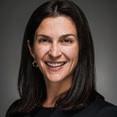



















































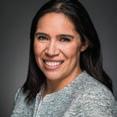

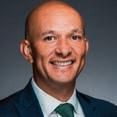
With newly minted CBRE business cards, minimal personal savings and no clients to his name, Mark Cassata moved to Chicago in 2011 and spent four months walking through almost every office building in downtown Chicago to catalog the square footage, lease terms and other nuances of some 2,600 tenants for his own proprietary database of market intelligence. It proved to be time well spent. Not only did his grasp of trends and knowledge of where new spaces were becoming available help get firms to hire him for lease negotiations, CBRE ultimately used his index as a template for the Salesforce customer relationship management platform the brokerage uses globally today.
The biggest dividend came when Salesforce itself went hunting for new Chicago office space. Armed with his custom data, Cassata was put on the team that negotiated the tech giant’s 2018 deal to anchor the new 60-story Salesforce Tower at Wolf Point, establishing him among the class of top tenant reps in the city.
“He is relentless and aggressive, but also personable in (negotiating) as well,” says former Chicago Public Schools head of real estate Sevara Davis. Cassata represented the school system when it restructured its Loop headquarters lease in 2022, reducing its future financial commitment by $12 million. Law firm ArentFox Schiff and co-working giant Industrious are
Group creative director
When he entered Valparaiso University and worked toward his journalism degree, Rony Castor had dreams of being a sportswriter like Chicago native Michael Wilbon of ESPN.
However, watching how “Mad Men” portrayed the business of advertising shifted his focus to breaking into the creative space. After a stint at DDB in Chicago, Castor enrolled at the Chicago Portfolio School to study copywriting, which led to working with agencies that offered experience on campaigns for McDonald’s, Toyota, the Golden State Warriors and other high-profile brands.
One memorable campaign was an advertisement that included Castor voicing a talking Mini Babybel cheese in a Haitian accent inspired by his father. Since then, he’s added voiceover work to his repertoire and can be heard in many of his campaigns. While the creative work he does for products is a passion, he also creates campaigns for causes, something he always wanted to do. One such project is “Driving While Black,” which earned him and his co-creators an award at this year’s Cannes Lions International Festival of Creativity.
The campaign featured a digitally designed car meant to protect Black
“If you bring the pieces together of being extremely hardworking, being very systematic and having a target, you don’t need to have the connections, you don’t need to have the pedigree and you don’t need to have gone to (a) school where half the people in this business came from. But the mountain is way more steep.”
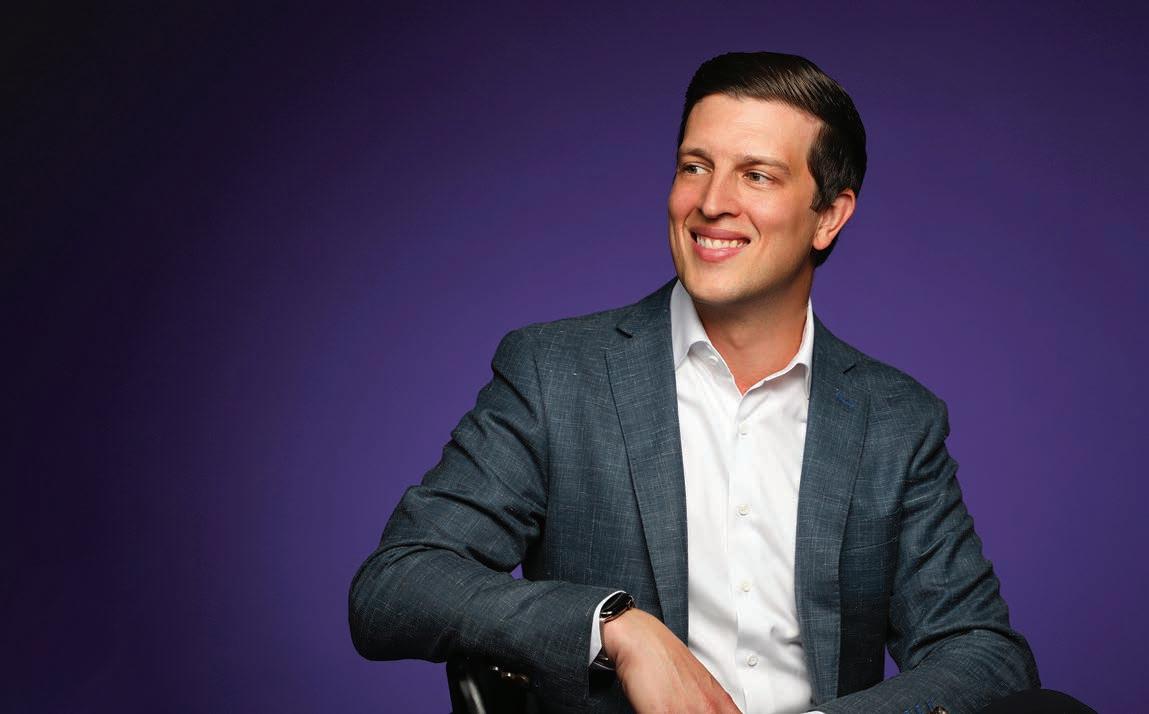
among other clients today.
The Machesney Park native had early exposure to real estate through a residential flooring business that has passed through three generations of his family. But he was just the second of his generation to go to college, self-funding his way to a marketing degree from Illinois State University before
breaking into commercial property brokerage during the Great Recession.
Cassata today also serves as vice chairman of nonprofit mentorship program Chicago Scholars, aiming to help create pathways for low-income students into the field.
“If you bring the pieces together of being extremely hardworking, being very systematic and having a target, you don’t need to have the connections, you don’t need to have the pedigree and you don’t need to have gone to (a) school where half the people in this business came from,” he says. “But the mountain is way more steep.”
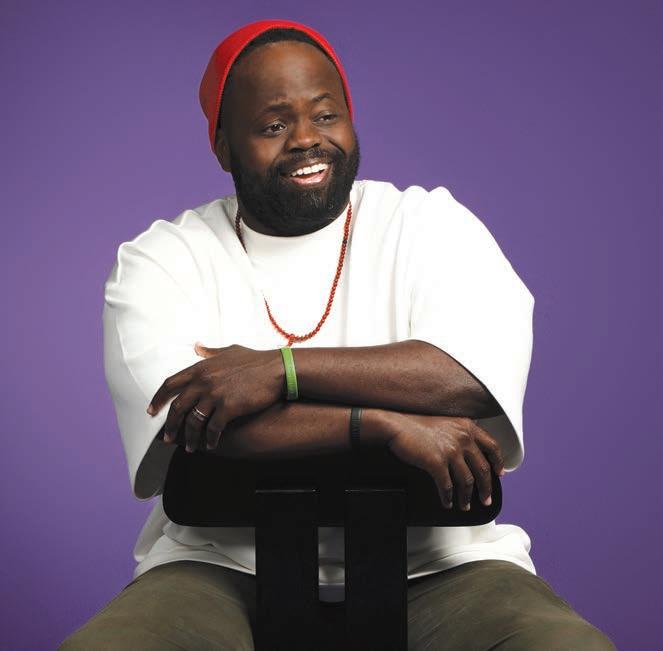
drivers during police encounters. It has transparent doors, no trunk, no glove box and a 10-and-2 steering wheel to keep hands visible. They also designed it without an engine. Why?
To highlight the double standard Black people face when interacting with police.
“I know this campaign isn’t going to end racism, but I hope it shows that if we can all do something, we can chip away at it,” Castor says. “We should be consistent, and hopefully one day we can implement change.”
Castor has always wanted to do creative content that made an impact, says Anthony O’Neill, executive creative director at Golin and collaborator with Castor since their time at the Chicago Portfolio School.
“Rony truly brings himself to the table. Every time we’re presenting together, I want him to speak,” he says. “When we met, he had a drive and passion to produce bold work. It’s been a great journey creating together the last 15 years.”
Pawan Naidu
Danny Ecker
When the pandemic hit, David Chaimovitz hunkered down at his aircraft spare parts business, selling what he could before commercial aviation all but stopped.
Then he doubled down, betting that demand for air travel would bounce back but supply chains would not, leading to even higher demand for spare parts. He was right on both counts. His Lincolnshire-based company, Setna IO, is expected to do $500 million in sales this year, up from $40 million in 2019. Headcount has grown from 30 to 250.
“He saw around the corner. It’s so rare, being able to see the opportunity and to seize it,” says Dan Drexler, who follows the aerospace business for Chicago-based Longview Asset Management, which is not an investor.
“He’s the most successful entrepreneur I’ve ever met.”
Chaimovitz got into the business by accident, when he was signing up companies to buy electricity from alternative suppliers and called on Prime Air, an aviation parts seller.
“(The CEO) showed me what he was doing, and it was better than what I was doing,” he says.
Chaimovitz didn’t know anything about aircraft parts, but he knew how to sell. He’d worked for his mother, an industrial real estate broker, knocking on doors looking for potential customers. And he learned how to run a business from his father, who runs a scrapyard.
“The whole business is understanding the value of every single part on every single aircraft and understanding the demand,” Chaimovitz says.
His business took off when he began buying entire aircraft and dismantling them. Then he added service, opening maintenance operations. He’s recently started buying planes and leasing them to airlines.
“Right now, those aircraft are throwing off cash flow,” he says. “Then we’ll break them down and sell the parts.”
When he’s not breaking down aircraft, Chaimovitz is breaking down opponents in the gym, where he’s been
Taylor Corbitt leads a team of 30 lawyers as vice president of global litigation for Allstate, a job she never imagined she would be in after getting a degree in cellular and molecular biology at the University of Virginia.
“I was a STEM kid,” Corbitt says. “I had no interest in being a lawyer. I thought that was boring.”
But she changed her mind after seeing the difference a lawyer can make.
“Litigation came out of nowhere and litigation felt like a calling from the first time I was on my feet in a courtroom,” she says. “A verdict can change the course of someone’s life or change the trajectory of a company.”
Corbitt is an advocate for fostering career paths for women through organizations such as Women in Bio; ChIPS, a professional nonprofit championing and connecting women in technology, law and policy; the National Association of Women Lawyers; and the Women in IP Committee of the American Intellectual Property Law Association. She’s also a governing member of the Chicago Symphony Orchestra.
Corbitt understands a client’s needs and is able to translate those needs into tasks for lawyers on her team, says Ron Safer, a former federal prosecutor and a founding

partner at Riley Safer Holmes & Cancila, who worked with her when she was at the firm.
“She is uniquely business-focused in her client service model,” Safer says.
“Many lawyers see everything as a legal problem, the client sees it as a business problem, and Taylor seamlessly bridges that gap that many lawyers have a difficult time bridging.”
Safer adds she was equally good at working as a leader and a team player, drawing on whatever skills were needed for the job at hand.
And even though she’s not peering through a microscope anymore, Corbitt still brings that data-driven approach to her work as lawyer. She also views a large part of her job as research, striving to learn as much about every division at Allstate so she can better understand what might be coming down the pipeline on the legal front.
“I try to bring a scientist’s curiosity to everything that I do at work,” she says. “I actually credit that for a lot of my success, just flexing that curiosity muscle, but it also means for me leveraging data and leveraging statistical analysis to problemsolve in the litigation space.”
Mark Weinraub
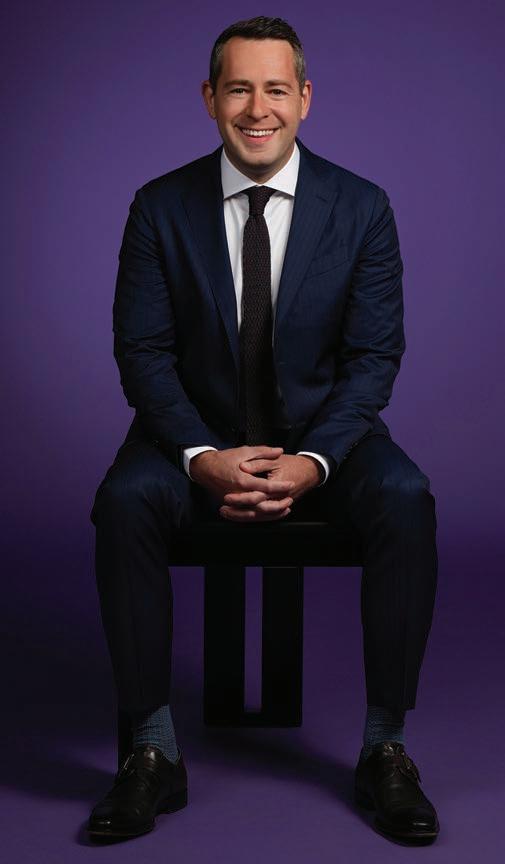
Mike DeLaRosa was a 33-year-old hospital chief in March 2020 when he found himself at ground zero in the pandemic. It was a trial by fire that taught him a lot about leadership at a young age.
When the first patient came down with COVID-19 at Kindred Hospital Chicago Lakeshore, a long-term care hospital on the North Side, DeLaRosa had been a CEO for only a couple of months.
There was a lot of fear among staff, he says, but he knew the hospital had taken every known precaution. So he donned personal protective equipment and entered the patient’s room first.
“You can’t ask someone to do something you’re not willing to, and when I did, the team followed,” he says. “I came into the job wide-eyed and excited. Then, with the pandemic, felt sheer panic. But you have to maintain your cool and poise.”
That leadership led to a new challenge when, in November 2023, he was tapped to head a unique new hospital on the Rush University System for Health campus.
Rush Specialty Hospital, which opened in May, is a joint venture between Rush and post-acute hospital company Select Medical. It’s one of the first examples of a hospital that combines long-term acute care and inpatient rehabilitation under one roof.
The ability to provide both services in one hospital gives continuity to patients’ ongoing care, DeLaRosa says, and allows a team of providers to follow patients along their journeys.
He says being able to build a team from the ground up meant he could find the best people handling every aspect of care, from physician and nurse leaders to housekeeping and food service workers.
“Every team member has an important role to play in getting the best care, the best comfort, the best nutrition, for the patient to get better and get home,” DeLaRosa says.
The wisdom DeLaRosa has gained along the way was evident when he first interviewed for the specialty hospital leadership role, says Michael McAlister, regional
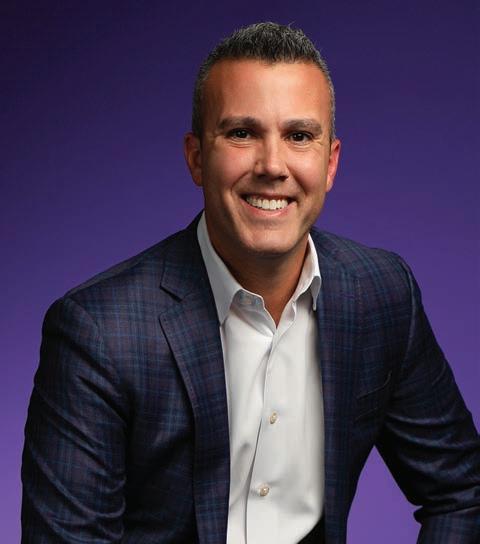
vice president at Select Medical.
“Mike’s experience and the fact that he knew Chicago was a big plus,” McAlister says, noting the Rush partnership is the first Illinois hospital the company has opened. “But it was really that his disposition was so strong, what we look for in our leaders. His communication style is very clear and direct, and he’s confident without being arrogant.”
Through several months of getting the hospital ready to open, DeLaRosa proved his leadership chops by bringing together a strong team and working through challenges.
McAlister says many of Rush’s post-acute staff moved into new roles as Select Medical employees, and DeLaRosa’s talents at communicating and team-building helped with those transitions.
“He’s got that easy, confident style and knows about the levels of care we’re providing and understands the community, which made him a great choice to start a new hospital from the ground up,” says McAlister. Jon Asplund
Felipe Diaz-Arango became aware of how media influences people’s perception of culture when he was a kid, splitting time between his dad’s place in Colombia and his mom’s in Massachusetts.
Convincing his American friends’ parents to let his pals come along on visits to his dad was difficult. When they heard “Colombia,” they thought “drug wars.”
“I really had to assure them we weren’t going to be dodging bullets. We were going to be doing normal stuff,” Diaz-Arango says. “The conflict in Colombia was a smaller part. I always felt like I had to unflatten the view about the country.”
It’s an upbringing that primed him for a career in multicultural advertising. As head of strategy and inclusion at ad agency Paco Collective, Diaz-Arango’s job is to learn about the audience a client’s ad is targeting, then guide the creative process. He looks for perspectives that don’t often get portrayed.
“If I (am) able to bring up different points of view and experiences that don’t usually get much exposure in media, I just think that that helps the discourse in general,” he says. “It just makes us a better society.”
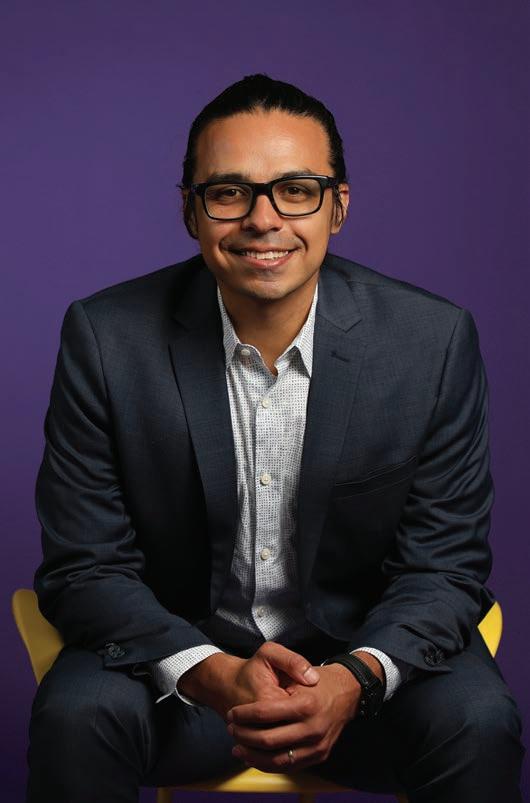
It also helps keep clients happy. Such an approach makes it more likely the potential customer will remember the ad and be motivated to buy the product.
When Diaz-Arango was working at Alma DDB, Molson Coors wanted a football-related campaign that would raise Coors Light’s profile with a Latino audience and have mass appeal. His team focused on Tom Flores, the first minority head coach to win a Super Bowl. The ad became a campaign to get Flores, whose parents were Mexican immigrants, inducted into the Pro Football Hall of Fame.
The ad aired in January 2021. Flores was inducted that same year. The bigger picture? “We (Latinos) are part of what people call Americana as well,” Diaz-Arango says.
Diaz-Arango took a nontraditional route into the advertising world. He majored in political science at the University of Chicago and started freelancing with Leo Burnett in 2013. He has worked at several agencies since, landing at Paco in February 2024.
“I’ve never seen him compromise anything,” says Martin Serra, Paco’s executive creative director, who first worked with Diaz-Arango at advertising agency FCB. “Even a good idea from a creative perspective, he’ll be like, ‘OK, what else can we do to make it not just good, but great?’ ”
Ally Marotti




Executive director, SEIU Illinois State Council; President, Community Commission for Public Safety and Accountability
Most people loathe being shouted down at work. But Anthony Driver says it was one of the happiest moments during his time leading the Community Commission for Public Safety & Accountability.
The yelling came from 100 residents during a 2023 hearing, as Driver and his commission — created in 2021 to oversee the Chicago Police Department and other police watchdogs — gathered feedback before submitting a list of three finalists for the vacant police superintendent position, a list that included Larry Snelling, who was chosen by Mayor Brandon Johnson.
“That’s beautiful,” he says of the raucous hearing, “because a couple of years ago, you would have never had the opportunity to do this.”
Appointed by former Mayor Lori Lightfoot in 2022 to lead what was then an interim commission, Driver says his goal was to “build this into something with legitimacy” despite early growing pains, as he fought with Lightfoot and thenPolice Superintendent David Brown.
“They were saying that this commission is advisory in nature. It doesn’t have any power. You can’t do this. You can’t do that,” he says. “So I knew that it would take somebody who wasn’t afraid to stand up to the mayor.”
Now in his first year of a four-year term as president of the fully established commission, Driver wants to leave a legacy. The Back of the
Yards native and Howard University graduate says his own experience having friends and relatives killed in shootings propelled him into politics.
“A lot of the burden that I carry in the work that I do has been shaped by violence,” says Driver, “and one of the best ways to be able to make a difference is to get involved and try to push for changes in the Police Department.”
As former political director at SEIU Healthcare, he helped form the commission he now leads through a tense City Hall legislative battle.
“If you want something for your community, you have to go out and get it,” he says. “This isn’t an infant commission anymore. It’s time to see how much good we can actually do.”
Driver’s other job — executive director of the Service Employees International Union Illinois State Council, combining the resources of three SEIU locals to endorse candidates — puts the former City Council candidate squarely in the political arena. He’s currently organizing the union’s effort to pour members into Wisconsin to help win the state for Vice President Kamala Harris.
Greg Kelley, the state council’s president, describes Driver as a “strategic thinker” amid the chaos of Illinois politics.
“He’s calm under pressure,” Kelley says. “He’s able to take in a lot of information and calmly analyze it and keep his head.”
Justin Laurence



























As a wise investor, Jennifer Fried knows the value of diversification. But when the opportunity arises, she finds herself drawn to going all in on launching a startup.
In 2015, Fried co-founded and helped get Explorer Surgical off the ground. Six years later, at age 33, she sold the health tech firm to data management and supply chain consultancy Global Healthcare Exchange.
Following the sale, she “got back into investing,” she says. “I wanted to spread out my risk and not concentrate on one company, with the highs and lows, the unpredictability, having my eggs in one basket.”
“But I guess there’s something wrong with me. I missed building something, shaping something and working with a small team on a project that could change the world,” she says.
So she co-founded Flow Medical, working with UChicago Medicine physicians Dr. Jonathan Paul and Dr. Osman Ahmed to bring to market a novel thrombolytic catheter that treats pulmonary embolism.
Dr. Steven Gould, consulting director at the University of Chicago’s Polsky Center for Entrepreneurship & Innovation, says when Fried presented Explorer Surgical to the Polsky Center’s New Venture Challenge, she impressed him as
“smart, energetic, aggressive, insightful and a good person.”
As CEO at Explorer Surgical, she led a successful exit “for me and everyone else who invested,” he says.
“When you’ve had a successful exit at a young age, you tend to take a little time and savor it for a brief moment,” Gould says. Fried, who’d just had her second child and moved with her husband and young family to a home in Highland Park, told Gould she wanted to get back into venture capital.
Gould says he told her: “You can do that, and you’d be good at it, but I think you should think about another startup. If you could do it again, as a young woman, you’d be in rarefied air.”
Gould believes she’s on her way to another success with Flow Medical.
“There is great science and there is great business, (and) blending the two is not for the faint of heart,” he says. “To be a successful entrepreneur you need to be ‘four Rs’: relentless, resilient, resourceful and realistic. She has all that and vision.”
Bringing Flow Medical along “has been so much fun. It is rewarding to see the technology develop and the innovation grow,” Fried says. “That’s why I get so excited for what the future holds.”
Jon Asplund
“There is great science and there is great business, (and) blending the two is not for the faint of heart. To be a
successful entrepreneur, you need to be ‘four Rs’: relentless, resilient, resourceful and realistic. She has all that and vision.”
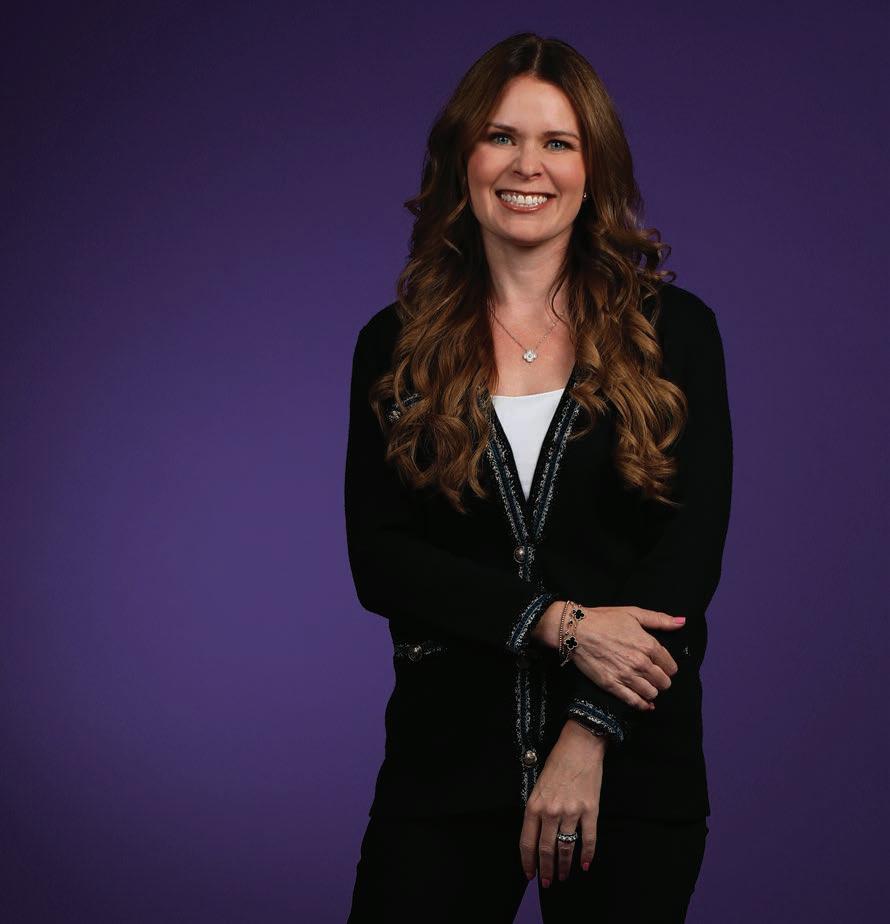
Executive director, DNC host committee; Incoming
When Vice President Kamala Harris delivered a prime-time speech at the United Center during the final night of the Democratic National Convention, Christy George took in the “incredibly powerful moment” with her two young daughters.
Not only did they see the woman seeking to become America’s first Black and South Asian female president. The night also provided “an opportunity to my children where they could see that their mom was part of something big.”
Less than a year earlier, George had been hired as executive director of the Chicago 2024 host committee charged with throwing the weeklong party. The committee raised a record $94 million, hired vendors, organized an army of volunteers and coordinated with city, state and federal agencies to welcome the political world to Chicago.
hire an entire team, make sure that we put the fundraising endeavor front and center and then coordinate multiple levels of government and law enforcement.”
The fundraising pitch was simple, says George, and the city’s corporate and labor communities were ready to contribute.
“This is about making sure that this is a success when the world is watching,” she says. “How can we make sure that we put the city in the best light and leave a positive legacy for the city?”
She “always gets to the goal. . . . Christy is unusual in that she will not let it fail.”
George says her prior experience as deputy budget director to former Mayor Rahm Emanuel and assistant deputy governor to Gov. JB Pritzker “made a world of difference” as she worked with City Hall veterans to ensure the convention planning was a success.
Pritzker says hiring George to run what he described as essentially a startup company was a “no-brainer,” because she “always gets to the goal.”
“Christy is unusual in that she will not let it fail,” he says. “She had to, from scratch,

More comfortable behind the scenes, the media focus on the convention forced George into the spotlight as she assured skeptics that convention planning was running smoothly, even during the brief chaos caused by President Joe Biden stepping aside for Harris.
The convention experience should help George in her next gig. Weeks after the convention wrapped up, she was tapped as CEO of Intersect Illinois, leading the publicprivate partnership that recruits companies to the state.
Justin Laurence
e xecutive director, c M e Group Foundation
As executive director of the CME Group Foundation, an education-focused nonprofit, Eva Giglio oversees $120 million in assets and allocates millions in grants annually to local organizations, leading some of the city’s most important initiatives and opportunities in early education. It’s a career shaped by her time at Chicago Public Schools, where Giglio began as a Spanish teacher at Kenwood Academy High School. Her work at the school quickly caught the attention of Janice Jackson, then-CEO of CPS.
“I needed someone that was an educator that understood the policy, plus could keep things organized and move the team along,” says Jackson, who hired Giglio to join the team she led as chief education officer at CPS. “The level of vigor and the urgency she works with is unmatched.”
When Jackson was named CPS chief, Giglio came along as deputy chief of staff, leading some of the most important initiatives of Jackson’s tenure. “She was the lead behind the vision that I had for Chicago Public Schools,” recalls Jackson, who now heads the education nonprofit Hope Chicago. Giglio led the creation of a five-year strategic plan for the district, engaging thousands of stakeholders across the city in the process, from educators, school leaders, parents and students to govern-
“I’ve always been a systems thinker and trying to connect the dots. With my experience in CPS and government, I can really think about how to best leverage the foundation to better serve Chicago students and fill in the gaps.”

ment agencies and nonprofit leaders. She also led the task forces CPS assembled around virtual learning and then reopening schools during the pandemic, which included working across agencies to coordinate safety protocols, testing and other resources.
Now, in the nonprofit sector, Giglio draws on her years working in the school district

to better serve Chicago students.
“I’ve always been a systems thinker and trying to connect the dots,” she says. “With my experience in CPS and government, I can really think about how to best leverage the foundation to better serve Chicago students and fill in the gaps.”
Giglio launched a new grantmaking strategy with an initial $2 million invest-
ment focused on the mental health of girls and young women in Chicago, supporting therapeutic services for girls and addressing their needs. She’s sourced millions for K-12 initiatives, including toward computer science programs for underserved students, which remains a priority for the organization.
OBedrock Materials
pportunity keeps getting in the way of Spencer Gore’s carefully laid plans.
He went to the University of Illinois Urbana-Champaign to study aerospace engineering, but dropped the major before his senior year when his boss at Tesla offered him the chance to extend his internship in Silicon Valley and work on the new battery system for the Tesla 3.
“I had to be part of that,” says Gore, who earned a degree in physics, which he’d planned as a second major.
He started a company to bring electrification to regional passenger aircraft, but the opportunity to dramatically improve drones emerged first. Gore planned to get a doctorate in materials science at Stanford University but cut it short with a master’s degree when the market opened faster than expected for new battery technology that he and a partner were pursuing. Gore moved home to Chicago to build a new company, Bedrock Materials.
The switch-ups started early in his career: He worked at SpaceX as an intern a dozen years ago, but then moved to sibling startup Tesla.
“Working on spacecraft made me realize that even if we succeed in creating a mass-spacefaring civilization, looking back at a biosphere in ruins would diminish that achievement,” Gore says. “I felt a moral imperative to instead work on sustainability.”
As a Tesla intern, he lived in the parking lot in a beat-up motorhome, which he later drove to Alaska in the middle of winter, packing a bunch of textbooks on topics including turbo machinery, particle physics and corporate finance. He stayed for three months.
“I wanted to figure out what the heck I was going to be when I grew up,” says Gore, who returned to Tesla full time. On the day he paid off his student loans, he left to start Impossible Aerospace. After creating a surveillance drone with greater range than anything else on the market, the company was acquired.
“He has the ability to fly high, but also dive deep,” says Greg Reichow, a former Tesla executive and partner at Eclipse Ventures who backed Gore’s aviation startup. “He has a unique skill to develop compelling vision but also to get very deep in the technology needed to solve the problem. I’m excited for where he’s going to go.”
Like the “PayPal mafia,” which included Elon Musk as well
as U of I alum Max Levchin, Tesla produced a network of sustainable-energy founders such as Gore. “The network of people . . . who were there is ever-present across the entire sustainable-energy industry,” Gore says.
“One of the challenges that all founders who are ex-Tesla have is to ask themselves: What are the elements of the Tesla experience and culture that we succeeded because of, and which were the elements we succeeded in spite of?” says Gore, who drives an early Model S of the vintage he worked on as an intern.
John Pletz

Chief marketing and revenue officer, Griffin Museum of Science & Industry
Working in communications, you have to know every part of your company, from what the workers are doing to the technical side of the business to the supply chains, says Laura Herrera.
“You’re the translator of the product to the public and must know how everything operates,” says the Griffin Museum of Science & Industry’s chief marketing and revenue officer.
With 15 years of experience working in strategic marketing and branding across the technology, hospitality and nonprofit industries, Herrera has learned a lot about the different idiosyncrasies of each sector, but nonprofits have always held a special place for her.
With a dad who worked in nonprofits and a mom who was a school administrator, a career in serving always felt like a natural fit for Herrera, who left a corporate agency for the Chicago History Museum, her first job in the nonprofit sector.
There, she began by getting the museum up to speed on technology, starting with a makeover of the nonprofit’s website and updating online resources. She also spearheaded what would become the three-day Chicago Hot Dog festival in Lincoln Park,
an instant hit that helped raise funds and generate buzz around the museum. “We really saw it as a vehicle to tell Chicago history in a way that was very accessible for people,” she says.
Other museums noticed her success, and before long she landed at the Museum of Contemporary Art, where she quickly made an impression. “She’s the best strategist I’ve ever met,” says Gwendolyn Perry Davis, the MCA’s deputy director and chief operating officer.
At the Streeterville institution, Herrera set the museum on a timeline to become fully bilingual in Spanish, from its website to its advertisements to the labels on its walls, a process that’s not easy in a traditionally slow-moving sector. Davis believes it will be the first museum in Chicago to achieve this, thanks to Herrera’s blueprint.
She was also instrumental in changing the way museumgoers interact with the facility in the age of COVID-19, an existential problem for museums struggling to attract guests.
“Not only did things become more digital, but it meant that museum-guest interactions needed to change,” Herrera says. “There is less importance on being a castle on a hill where the experts just tell you the informa-
“She’s the best strategist I’ve ever met.”
Growing up, watching her dad practice corporate law, she knew early on she wanted to follow in his footsteps. After getting a psychology degree from Yale, Groden attended Harvard for law school, where she took a food policy course that left an impression. Still, she began working at a corporate Chicago law firm after graduation.
One night while watching an episode of “Chef’s Table” featuring chef Grant Achatz of Alinea, a restaurant a few miles from her home, Groden was inspired to send a cold LinkedIn message asking if they needed a lawyer. Two weeks later, she was offered a position as general counsel. However, things took another pivot during her first pregnancy. Groden was listening to a food podcast, she says, that was discussing how “the brand that rhymes with Legos” dominates the frozen waffle market. Realizing she would likely be feeding her child frozen waffles, she searched for an alternate brand, but was disappointed by what she found. So she took matters into her own hands, bought a waffle iron online and started experimenting with different ingredients. When she realized other parents have the same concerns, her frozen waffle company Evergreen was born.
She began going to local stores and pitching her product. After

tion. It’s more of a conversation now.”
At MSI, Herrera oversees marketing and revenue at the museum that sees around 1.5 million visitors annually and targets a wide range of audiences, from older patrons to

finding success, she reached out to Whole Foods and received an order for two dozen stores.
“I probably had no business going up to Whole Foods,” Groden says. “It might bruise your ego, but I could get feedback and improve. The best-case scenario is they’ll say yes, which they did, and it changed the path of Evergreen forever.”
Since then, Groden has expanded her manufacturing base, reached 3,500 stores nationwide,
and is on track to quadruple revenue this year.
“Emily has always been crystal-clear on what she wants to do and where she’s headed,” says Rebecca Kahnweiler, partner at Chicago venture-capital firm LongJump Ventures, the first investor in Evergreen. “The best part is, she goes and does it. Emily is meticulous and consistently overdelivers. It’s an amazing combination for an entrepreneur.”
Pawan Naidu
c hief investment officer, Mavrek Development
Growing up in Lake Forest and spending time working for his father, an architect, builder and developer in the Chicago suburbs, Anthony Hrusovsky always knew running a real estate business was a possible career path.
Now he’s helping lead Mavrek Development, a small firm that’s started taking on more ambitious projects, including a recently completed Streeterville high-rise and a planned office-to-residential conversion in the Loop.
He had one of Chicago’s most prolific development firms as a training ground, managing projects at Sterling Bay when the company was in a similar position of moving from smaller deals to larger ones, like McDonald’s global headquarters in the West Loop.
“You never really heard ‘no’ out of him,” Sterling Bay Managing Principal Keating Crown says. “You asked him to do something or take on a bigger project or something that he hadn’t done before and the answer was always ‘yes.’ ”
Mavrek is scaling up at a time when developers face economic hurdles that have
As managing director at Murphy Real Estate Services, Chris Horney has helped lead the development of some of the city’s most eye-catching buildings, from a two-tower glass highrise overlooking Grant Park to the massive redevelopment of the Beaux Arts-style building that was once home to the Cook County Hospital on the Near West Side.
But more recently, as economic factors including high interest rates made it harder for the firm to make big, ground-up developments in Chicago pencil out financially, Horney has spearheaded a development portfolio that’s allowed the firm to establish a new business line and a footprint in around two dozen states, though it may not win any architectural awards: building day care facilities.
“It’s not cool, it’s not sexy, but it’s reasonably profitable,” he says. “Amazon can’t create day care, right? It’s a needed service that’s somewhat immune to some of the other forces that are out there.”
The Purdue University and Harvard Business School alumnus has weathered economic ups and downs before. He started his career in 2008 working for a Detroitarea construction company that laid off a third of its staff when the financial crisis hit.
“Our business is a roller coaster, and I try my best to sort of be as
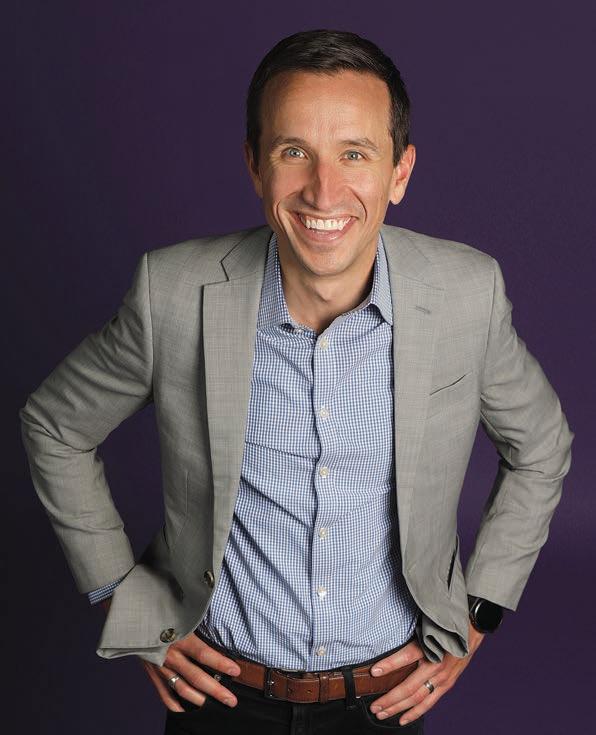
even-keeled as you can,” Horney says. “Otherwise, it’s a stressful world to be in.”
After graduate school, Horney moved to Chicago with his wife and the goal of getting into real estate development. He started working with John Murphy about a decade ago, when the real estate veteran and then-MBRE president was looking to take on more development projects.
“He’s highly adaptive to all the various product types we’ve developed,” Murphy says. “I think that gets back to his strict disci-
pline and being well-organized, on top of being a very smart guy.”
Another challenge Horney had to adapt to was working through what was going to happen to the company’s projects during the onset of the COVID pandemic — while working remotely and taking care of three young daughters.
“When everything in the city shut down, I had a 1-year-old, a 4-year-old and a 6-year-old all at home,” he says. “Our business is seemingly on fire, and I’ve got my 1-year-old crawling around.”
Rachel Herzog

made for fewer projects in the pipeline.
The Streeterville project, the Saint Grand, is leasing up as the number of new apartment units added to downtown Chicago is expected to drop off sharply in 2025.
Hrusovsky, who now lives in Lake Bluff with his wife and two children, a 4-yearold son and 2-year-old daughter, says developers are “still in the period of having to sell Chicago a little bit” to potential capital partners with concerns about the city. Amid all the challenges, he sees developing and growing Mavrek as work that’s important to the city’s future.
“Chicago right now is in need of people who are trying to grow and trying to develop, not only in real estate, but in general, and I think, specifically, young entrepreneurs who have 30, 40, 50 years of runway in front of them to do that,” he says. “I like to think that’s where I fit into the equation. My partners and I, we’re committed to Chicago. My family, friends, everybody’s here, and we want to do what we can to continue to support the growth of Chicago.”
—Rachel Herzog
“You never really heard ‘no’ out of him. You asked him to do something or take on a bigger project or something that he hadn’t done before and the answer was always ‘yes.’ ”
On a bus ride from her home in East Detroit to her high school in the suburbs, Nina Idemudia was struck by the difference in landscapes and the lived environment.
“I just remember seeing the landscape change from vacant lots and deteriorating buildings to seeing parks, bike lanes and a completely different infrastructure,” she says. “That really stuck with me.”
That moment ignited her interest in examining the way history and social movements impact our lived experiences, and stayed with her at the University of Michigan, where she majored in African American/Black studies and women’s studies. Idemudia wanted a career path that could allow her to implement what she had learned in college and affect concrete change.
“I need to be in those rooms and at those tables where decisions are made,” she says. “I need to be helping to leverage my identity as a Black woman to help better make policy changes.”
Idemudia enrolled at the University of Southern California’s planning school to do just that — yet her time there was spent on more than just studying a new field. She started a program that brought 100 middleschool students from the surrounding neighborhoods to USC’s campus to learn about planning as a career choice. She then landed in the Los Angeles City Planning Department, where she continued to work with the community and encouraged her colleagues to do the same.

Staying poised in front of community groups slamming her clients’ ambitious real estate projects isn’t much of a feat for Katie Jahnke Dale. A local TV station in her hometown once did a profile on the first-day-of-school commotion in her house, where she was the seventh-oldest of eight kids.
“I do well with chaos,” says the suburban Kansas City native. “When you’re the big family on the block, you’re the house where everyone wants to be.”
“I call her a change maker. Even as a young planner, she was bold and brilliant and inspired others to get involved in the community.”
“I call her a change maker,” says Lakisha Hull, a former colleague in L.A. who now heads the Prince George’s County Planning Department in Maryland. “Even as a young planner, she was bold and brilliant and inspired others to get involved in the community.”
Idemudia returned to the Midwest and before long was managing a $237 million Chicago Department of Planning & Development fund dedicated
Wvice president
Now, as CEO of the Center for Neighborhood Technology, a Chicago-based urban resilience nonprofit, she works to improve the lives of everyday people, especially in under-resourced communities.
“No matter what ZIP code you’re born into, you should be able to thrive in your community,” she says.
The center is working to build a resident-driven flood prevention plan in the Calumet Corridor, and its Transportation Equity Network works with decision-makers to include racial equity and mobility justice in transit planning through communitydriven decisions and investments — the kind of work first inspired by Idemudia’s high school bus ride.
Brandon Dupré
hen the IPO market was in need of a spark earlier this year, it was Mitchell Ji’s job to help get Wall Street revved up about the prospects of a 130-year-old business that tests other companies’ products.
Investors ultimately bought 20% more shares of UL Solutions than expected in a $1.1 billion offering.
“Everyone recognizes the UL brand,” says Ji, who celebrated the initial public offering by ringing the bell on the New York Stock Exchange.
He joined UL Solutions, formerly known as Underwriters Laboratories, last year after stints in finance at a trio of large Chicago companies: Diageo, Walgreens and Baxter, for the latter working on the spinoff of its biopharmaceutical unit, Baxalta.
Known for his savvy in building financial models, Ji oversees a team of 65 people who do financial planning and analysis, figuring out where UL Solutions should spend its money. Former colleagues dubbed him the “King of EQ” for his ability to connect with coworkers.
“Mitchell is incredibly curious and was great at
getting to know people across the organization and building relationships with people around the world,” says David Roman, who hired Ji at Baxter.
“He developed a lot of analytical processes that became critical to the company, which will endure beyond his tenure. I think he’ll end up being a CFO somewhere.”
Ji, who studied economics at Yale and received his MBA from Harvard, says the most valuable advice he received came during a stint as a Bain consultant, from a manager who advised him to push back more.
“He told me, ‘You need to step on people’s toes more, but provide evidence and analysis to support it.’ ”
Ji was born in Changzhou, China, and came to the U.S. when his father went to Michigan State University to get a doctorate. The family moved to Libertyville when Ji was in middle school, and he now lives in Bucktown. Outside the office, Ji is involved as an investor and adviser for a bar and mini-golf venue called Big Mini Putt Club, which made a cameo on the Netflix series “Love Is Blind.”
John Pletz
Now it’s Chicago’s biggest property developers knocking at her door at DLA Piper, the law firm where she was named comanaging partner last year. Jahnke Dale has become the go-to zoning attorney for groups behind the most complex, highimpact real estate projects, having represented Sterling Bay in its quest for city approval for Lincoln Yards, Related Midwest at The 78 and its 72-story skyscraper underway on the infamous Chicago Spire site, and a handful of big-name developers on major Fulton Market District projects.
Among other recent work, she steered Northwestern University’s controversial effort to win approval from the city of Evanston to demolish and rebuild Ryan Field. Jahnke Dale helped the school find enough middle ground with nearby residents putting up what she dubbed “next level” opposition to the $800 million project.
“I like working toward a com-

mon goal,” Jahnke Dale says of her passion for shepherding big developments from proposal to public approval. “Yes, there are wins and losses on negotiating points, but when I’m working on a project, everyone wants it to get done. Everyone wants to get to the finish line.”
The first in her family to go to law school, the University of Kansas, Chicago-Kent College of Law and University of Chicago Booth School of Business alumna rose from a summer intern in DLA’s Chicago office to join its real estate practice in 2013, training under veterans at the firm like Ted Novak and Rich Klawiter, who have worked on the city’s most influential real estate projects.
“She’s inheriting this incredible mantle of influence and im-

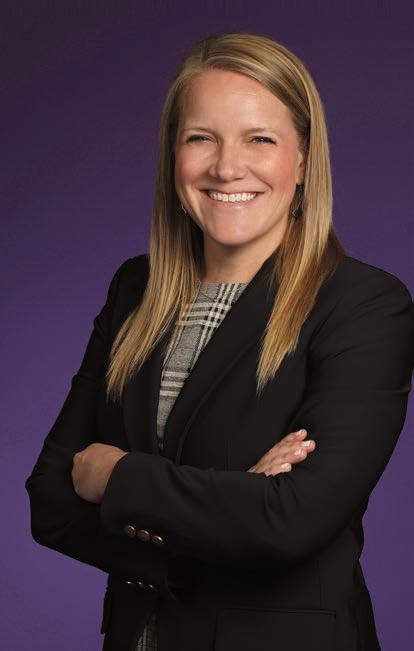
portance to the city of Chicago,” Related Midwest CEO Curt Bailey says. “She’s taking her place now as the most important and influential (zoning) entitlement attorney in the city, who has learned from the greats.”
Danny Ecker
Banking executive Garrett Johnson had been working at BMO for about eight years, making steady progress in the company’s sponsor finance division and getting promoted to vice president before he turned 30.
From that position, the Morehouse College graduate from downstate Ottawa could imagine the next 10 years of his career, and he did not like what he saw, despite the lucrative rewards that came with his trajectory.
“I kind of didn’t see that leap, that magic moment that could kind of get me to where I really wanted to be from an ambition and leadership standpoint,” Johnson says.
So he switched divisions in 2015 and joined the wealth business — where, he says, he fell to being the worst performer from a sales standpoint, as he spent years looking for a way to start something new.
But he’s bounced back. Since launching in 2021, the business catering to private-equity executives looking to invest in their own deals has grown revenue more than tenfold. It has brought in more than 30% of BMO U.S. Wealth Management’s top 20 clients and is a leader in referrals to and from other BMO divisions.
That business mirrors his own journey, as he saw switching to the company’s wealth division as a way to put his own skin in the game, much like private-equity executives do.
Johnson also has taken on working with BMO’s ultra-high-net-worth business for clients worth more than $100 million, which he says uses a different skill set than starting a new business within the bank.
“I was able to build something, which is rare in a large financial institution, but could I turn something around? Could I fix something? That’s a different kind of muscle.”
Outside of work, Johnson volunteers at One Hope United, one of the state’s largest child and family welfare agencies specializing in foster care, adoption and behavioral health. The organization, with a budget of $80 million and a staff of more than 800, works in Illinois and Florida, serving 10,000 children and families every year.
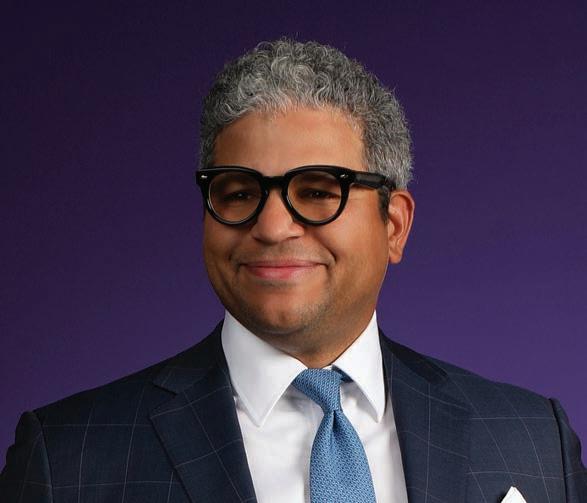
Johnson chairs One Hope’s finance committee and is the board’s treasurer, which One Hope United CEO Damon Cates says is a perfect fit for someone who knows how to arrange the nuts and bolts of a large organization in the best way to match its lofty goals.
“What I appreciate most in working with him is just the really strong ability he has in really understanding the mission, the impact we are trying to make and the good work we are trying to do, while balancing that with operating as a business,” Cates says.
Johnson also participated in Leadership Greater Chicago’s 2024 Signature Fellows program.
“You are able to spend pretty much a year developing relationships in this really curated way,” Johnson says. “We are talking about of all these issues that are impacting our city, that then spur interesting dialogues and conversations.”
Mark Weinraub







































As a student at the University of Michigan, Michael Kaplan started out studying architecture, but felt like it was a narrow piece of a broader puzzle.
Now, “every project’s a puzzle” in his role as vice president of affordable housing for developer Related Midwest — projects that require navigating complicated financing structures and working with various levels of government.
Among the most notable is Roosevelt Square, Related and the Chicago Housing Authority’s $172 million transformation of the former ABLA Homes public housing development on the Near West Side into new, mixed-income housing, with 222 units to be delivered this year and plans for almost 1,200 more.
Related had gotten involved with the project a number of years before Kaplan joined the firm in 2015, but things had stalled during the 2008 financial crisis until he picked it up. He’d gotten to know the neighborhood during his time as a graduate student at the University of Illinois Chicago, where he earned a master’s degree in urban planning and policy.
“I felt like this could be a great project,” Kaplan says. “It was sort of an outside-the-
box financial structure that came together, but was a first for a lot of the parties involved.”
His proudest accomplishment, he says, is building the Little Italy library branch, which was part of an earlier phase of the project that included a 73-unit mixedincome building on Taylor Street.
“It was hard, it was very complicated,” he says. “In the long run, you’re doing the right thing economically by making somewhere a better place to live.”
The Minnesota native lends his development expertise to the board of the Cook County Land Bank Authority, chairing the finance committee. Bridget Gainer, a Cook County commissioner who chairs the land bank, says his involvement has allowed the organization to “be more ambitious than we would have been on our own.”
“Everybody wants to see more development in Chicago, but you really need three things: You need money, you need strong commercial acumen, but the X-factor is really creativity that’s blended with mission,” Gainer says. “He has the commercial acumen, but he’s as mission-driven as we are to grow and make all communities in Chicago thrive.”
Rachel Herzog
The first time Megan Lally saw a commercial on television that she had helped create, she was at a bar with her friends in Lincoln Park. Fittingly, it was for Bud Light.
That was about 15 years ago, when Lally was an account executive at advertising firm DDB Chicago. She still remembers how proud she felt.
“Working with big brands like this in a high-profile place is so demanding. There are late nights and there are hard problems and there’s a lot of pressure,” she says. “But I’m at a bar with my friends and they can see what I work on. It was just pride and accomplishment.”
It’s a feeling with which Lally, now CEO at Highdive Advertising, has become familiar. The fast-growing independent agency is the force behind some of the biggest Super Bowl commercials in recent years. Just last year, it did State Farm’s commercial with Arnold Schwarzenegger — in the insurer’s tagline, he says “neighbaa” in his famous accent — and BetMGM’s spot with Vince Vaughn poking fun at Tom Brady.
Other campaigns include Jersey Mike’s Subs ads with Danny DeVito and Jeep’s Groundhog Day commercial with Bill Murray.
Lally’s dad pointed her toward an advertising career after he saw her creative fundraising efforts as cheerleading captain at Cary-Grove High School. Everyone else did carwashes; her squad sold mascot-shaped air fresheners.
She landed a job in Madison after studying marketing at the University of Wisconsin, then moved back to Chicago to work at DDB. There, she worked on accounts for SeaWorld, State Farm and Anheuser-Busch. She left in 2013 and went to Leo Burnett, where she worked on Fifth Third Bank, Brooks Sports and Allstate.
She left Leo Burnett for Highdive in 2017, a few months after a couple of former colleagues launched the agency. She was coowner and managing partner before being named Highdive’s first CEO last year. She leads operations, account management and strategy.
Highline’s 2023 revenue of $31.9 million and five-year growth of more than 746% earned the agency a spot on Crain’s latest list of Chicago’s fastest-growing companies. Lally has been instrumental in that rise, says Highdive co-founder and Chief Creative Officer Mark Gross.
“Watching her is like watching one of those people riding a unicycle on a tightrope juggling 40 plates,” he says. “She just never gets rattled and is able to handle so many things.”
Ally Marotti
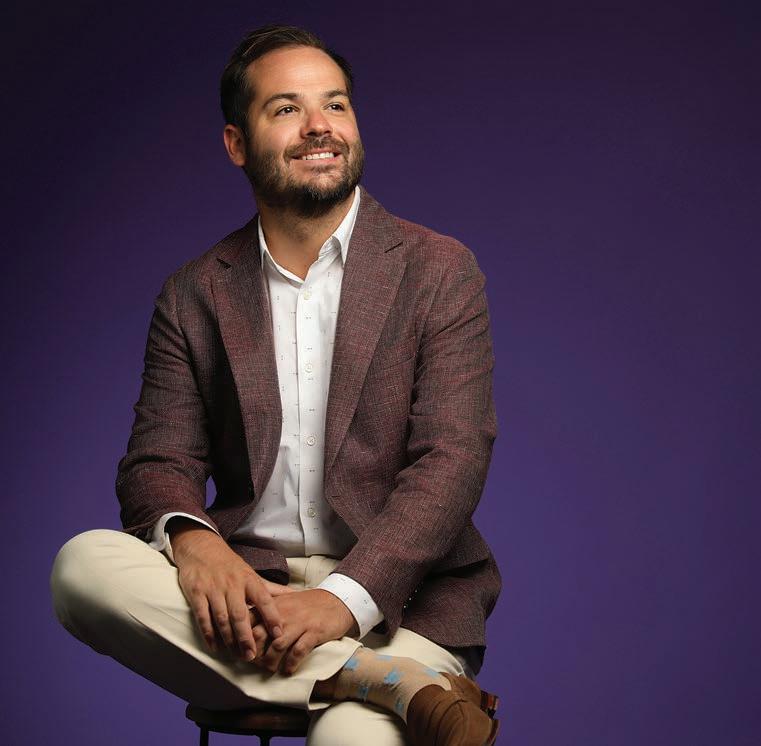

“In the long run, you’re doing the right thing economically by making somewhere a better place to live.”
Shortly after the Chicago Symphony Orchestra announced in April that 28-year-old Finnish conductor Klaus Mäkelä would be its next music director, Mäkelä took a tip from some friends on how he could start getting to know his future home city while he’s still working in Europe.
“I’m watching ‘The Bear,’ ” Mäkelä says.
The hit Hulu series about a fine-dining chef who takes the helm of his family’s Italian beef restaurant isn’t Mäkelä’s first glimpse of Chicago. He’s been here three times to work with the CSO. “I’m very charmed with the city,” he says. “What strikes me most is the architecture. You have such layers of architecture in one city landscape.”
In September 2027, Mäkelä will become the CSO’s 11th music director since it was founded in 1891. At the same time, he will start as chief conductor at the Royal Concertgebouw Orchestra in Amsterdam. (Until the start of his five-year term in Chicago, his title here is Zell music director designate.)
As CSO music director, Mäkelä will conduct a minimum of 14 weeks per season: 10 weeks of Chicago-area concerts and four weeks of national and international touring. In the seasons before his term begins, he will spend a few weeks a year conducting the CSO.
In announcing Mäkelä’s appointment, Jeff Alexander, president of the CSO Association, said that in previous work with the orchestra, Mäkelä “established an exceptional connection with our musicians and demonstrated his ability to deliver extremely moving performances of a wide range of repertoire.”
“Chicago is a city that has respect for making music, for connecting with music,” Mäkelä says, particularly the audience of the CSO, “one of the cherished musical institutions of the world.”
As music director, he says, “my role is to preserve the traditions and also develop. An orchestra has to be flexible, (drawing from) over 400 years of music, which is kind of like speaking 15
Senior marketing manager of flavored alcohol beverages, Molson c oors
When Molson Coors announced in 2022 it would be rolling out an alcoholic version of Simply Lemonade, the internet went crazy. Leading that conversation? Black drinkers.
“We leaned in,” says Josh McDonald, who was tasked with leading the marketing strategy behind the Simply Spiked rollout. “We worked really closely with our innovation team to ensure the flavor profile of the liquid aligned with tastes that were inclusive of Black drinkers’ tastes.”
As McDonald and his team built the social strategy around the brand, they also tapped into channels with their target audience. They got the product — the peach flavor — into a few episodes of the show “Bel-Air.” They partnered with Tinder parent Match Group for the limeade flavor launch, serving app users Simply Spiked-themed pickup lines.
Molson Coors considers Simply Spiked a success. The company has launched a new flavor every year. It also rolled out a limitedtime cranberry flavor in September. And McDonald says next year, new flavors — plural — are set to drop.


“My
role is to preserve the traditions and also develop. An orchestra has to be flexible, (drawing from) over 400 years of music, which is kind of like speaking 15 or 20 languages.”
Mäkelä, born in Helsinki, says he was a 7-year-old singing in a choir when he first noticed the conductor. “I thought, ‘Musicians work with one instrument, but the conductor plays the whole choir and orchestra. I wonder how that feels.’ ”
He studied conducting at the Sibelius Academy in Helsinki, and has conducted the Swedish Radio Symphony Orchestra, the Oslo Philharmonic and the Orchestre de Paris, among others.
“Simply Spiked’s success wouldn’t be possible without Josh,” says Marcelo Pascoa, vice president of marketing at Molson Coors. McDonald helped “define how the product and the brand connects with a new generation of drinkers.”
McDonald, who grew up between Nashville, Tenn., and Louisville, Ky., played football at the University of Louisville. Then it was on to business school at the University of Illinois UrbanaChampaign. Caterpillar, his first full-time employer, sent him to Panama for several months to work as a marketing representative. (Fitting, as McDonald now runs a travel company called The Travel Guydes on the side.)
McDonald moved to Chicago for a job at S.C. Johnson, where he worked on the Mrs. Meyer’s Clean Day and Shout stain remover brands. He started at Molson Coors in 2017, first working on economy beer brands such as Miller High Life and Hamm’s Beer.
Beyond Simply Spiked, McDonald oversees the strategy, financials and marketing execution for Arnold Palmer, Peace Hard Tea and Redd’s family of brands at Molson Coors.
Ally Marotti
franchisee sourcing and recruitment, McDonald’s
Ashli Nelson was about a year into her tenure at McDonald’s when Gov. JB Pritzker delivered some grim news: To slow the spread of COVID-19, he was considering closing restaurants.
Nelson knew how detrimental complete shutdowns would be. Nelson — then the fast-food giant’s director of Illinois legislative relations and diversity outreach and on the board of the Illinois Retail Merchants Association — helped create an alternative plan.
“We crafted a really good policy that allowed for drive-thru and takeout to be kept open,” she says.
The ability to bring in at least some revenue became a lifeline for restaurants during the COVID waves that followed. For McDonald’s, it was much more. The company emerged from the pandemic stronger. In July 2021, it reported shorter drive-thru times had boosted same-store sales, beating analysts’ earnings estimates.
“She broaches things the way I like: It’s a problem, let’s figure out how to solve it if we can solve it. Let’s not waste our time gnashing our teeth on things we can’t control,” says Rob Karr, president and CEO of the Illinois Retail Merchants Association.
It’s fitting that Nelson’s contributions resulted in saved time. Before she came to McDonald’s, she was Mayor Rahm Emanuel’s scheduler.

“My job was to figure out how to package the bad news with the good news so that (Emanuel) could continue to be re-elected,” Nelson says. “Budget season, teachers’ strikes. . . .You name the crisis, I was there.”
The job was hard. Nelson tells people she worked eight days a week. But she learned how to effectively communicate with elected officials, a skill that has come in handy at McDonald’s.
is opening new stores in the U.S. for the first time since 2014. Nelson is tasked with recruiting people to own and operate them. Again, the work is not easy. Each McDonald’s franchisee needs $500,000 and time. They’re required to train for six months full time or 12 months part time. “I’m essentially looking for unicorns,” she says.
Marotti or 20 languages.”
Dennis Rodkin
In that job, which stretched through both of Emanuel’s terms, Nelson was a member of the administration’s senior staff. If there was a piece of news to deliver, she deployed her team throughout the city to figure out where best to hold an event, who needed to speak and how to tell the story.
Now, her work is once again at the center of a major growth opportunity for McDonald’s. The hamburger chain
And she’s finding them. By late August, she was just a few franchisees shy of her annual goal.
Ally
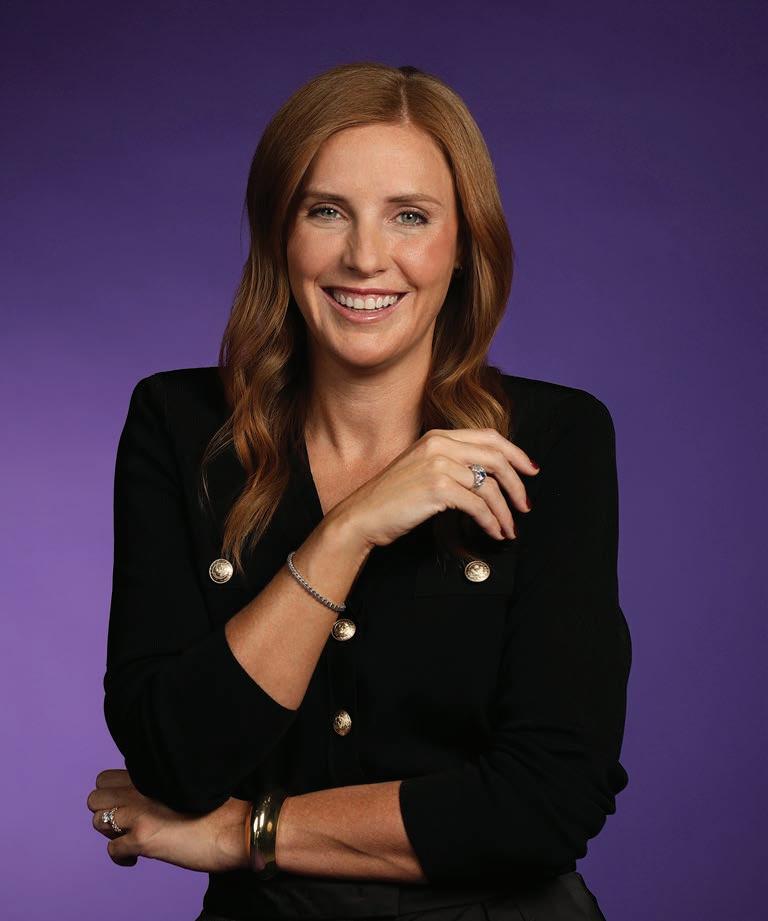
Tammy Pearce, who engineers the structures that make the architecture work in everything from Catholic churches to squash courts, got her first taste of building when she was a toddler, trailing her father while he did repair and maintenance work on rental buildings the family owned.
“As soon as I could walk, I started going with him,” Pearce says. “I was swinging a hammer, painting, helping him pull up old toilets. When I was 9, we rewired a whole building together.” When not working with her dad, she was figuring out how stuff worked by dismantling and reassembling televisions, blow-dryers and other things around the house.
Her parents, Gregory and Virsie Freeman, “weren’t very worried,” she recalls. “They knew I could put it back together.” Also at age 9, she started a little business doing computer repair.
Her mechanical aptitude propelled Pearce through Whitney Young Magnet High School and bachelor’s and master’s degrees in engineering at Cornell University. After a few years working in New York, she returned to her hometown of Chicago to work for structural engineering firm Graef, hired in 2013 as the Milwaukee-based company’s first Black female engineer.
A structural engineer designs “the skeleton inside the skin that the architect designed,” Pearce says. Among the skeletons on which she led the work: MetroSquash on Cottage Grove Avenue in Woodlawn and the 12-story
Paige O’Neil quit her job working with some of Chicago’s top commercial property sales brokers in 2014 to join a Chicago developer that had built a Soho House club and hotel in the gritty Fulton Market meatpacking corridor and had a vision of turning its environs into the city’s next hot neighborhood.
Her task: Help convince investors to back big new apartment, hotel and office projects for the developer, Shapack Partners, in a wholly unproven part of town, and get companies to move there.
“We really had to change the perception of the brokerage community and eventually of C-suite (executives) to prove that Fulton Market is not only where your employees are going to want to be, but this location is better than (elsewhere downtown) in a lot of ways,” O’Neil says of her early days with the firm. “We needed to curate this whole neighborhood, brand it and expand it.”
A decade later, the Fulton Market District is one of the fastest-growing commercial property submarkets in the nation, thanks in part to O’Neil’s success overseeing development and leasing of 2 million square feet of new buildings worth close to $1 billion.
“She’s always thinking about how to make her developments great and leasing great, not just trying to fill space,” says R.J. Melman, whose Lettuce Entertain You
“She’s always thinking about how to make her developments great and leasing great, not just trying to fill space. She’s always thinking about the greater Fulton Market neighborhood.”
Enterprises runs a restaurant and operates the top-floor event space at 167 N. Green. “She’s always thinking about the greater Fulton Market neighborhood.”
O’Neil’s early career gigs brokering office leases and creating offering memorandums for major commercial properties helped sharpen development skills that paid off in a big way last year. At a time when almost nobody could land financing for a big new construction project, she led Shapack to raise $150 million in debt and equity to kick off a new 29story Fulton Market apartment tower at 220 N. Ada St.
Danny Ecker
The Chicago-area native and University of Notre Dame grad turned in her most impressive work during the pandemic, which began while Shapack was under construction on a 750,000-square-foot office building at 167 N. Green St. O’Neil led a lease-up effort that brought the 17story property to 100% leased while remote work gutted other landlords.

on State Parkway in the Gold Coast.
Pearce’s current project is a Catholic church in Kansas whose Chicago-based architects designed it to have a large stained glass skylight suspended between round portions of the ceiling for a sort of three-dimensional effect.
“We make things like that work,” Pearce says.
A Black woman is a rarity in structural engineering. Pearce has worked to grow the numbers by advocating within her firm, which now has three Black engineers — one of them male — by working with ACE Mentor Program Chicago and by talking to schoolkids about the profession. “I want them to know there are more choices than doctor, lawyer and entertainer,” she says.
When she first began working professionally, “I felt the self-imposed pressure of being the only one,” Pearce says. “I always felt, ‘If I mess up, they’ll never hire another Black person.’ “ Eventually she came to understand, “I can’t represent everyone. I have to just focus on what I’m doing and do a good job.” The number of successful structural designs in her portfolio is testament to that focus.
Now living with her husband and son in Lakeview, Pearce is still building in her offhours, too. “I’ve put up drywall, changed out bathroom fixtures and built pieces of furniture,” she says. “My husband says I’ll always find a project.”
Dennis Rodkin
Dwayne Pickett was about to be fired from his first job when his wife made a bold suggestion: Tell your boss not to dump you.
It worked, and Pickett soon went from intern to entry-level staffer to an aide to chief of staff of the Public Utilities Commission of Ohio. He moved to the private sector, rising through the ranks of Integrys Energy Group, where he helped beat back a bill in the Michigan Legislature that would have crimped competition in the electricity market.
“He turned out to be a rock star,” says Todd Snitchler, former chairman of the Ohio commission and now president and CEO of the Washington, D.C.-based Electric Power Supply Association.
Today, Pickett is one of the leaders developing new markets for Constellation, a former subsidiary of Exelon, which operates six nuclear plants in Illinois. He’s taking the lead on Constellation’s push into hydrogen, as well as an effort to supply electricity directly to industrial users such as data centers by convincing them to locate near its power plants.
“He has the ability to make people see the benefit to them of coming along with whatever he’s trying to do,” says Kathleen Barron, Constellation’s chief strategy officer. “He’s a natural-born leader. He doesn’t get rattled.”
Constellation is one of the key players in a $1 billion Midwest hydrogen hub, an effort by the
federal government to ramp up a commercialscale hydrogen energy source for transportation and industrial uses.
Constellation plans to build the largest nuclearpowered, clean-hydrogen facility in the world at its power plant in LaSalle County if it can win approval for federal tax credits. Separating hydrogen from water requires energy, but a major challenge lies in not creating carbon emissions along the way.
“Clean hydrogen doesn’t really exist anywhere in this country,” Pickett says. “My job is to help start this business. Beyond that, my job is to find all types of ways to maximize use of our nuclear plants for all types of users.”
Pickett grew up near Camden, N.J., where his mother worked as an executive assistant and his father was a custodian at his school. His mom taught herself a computer program and became an IT leader. His dad became head of custodial services and groundskeeping for the school district. Pickett went to Ohio State University on an academic scholarship and studied political science.
“I did not expect to be in energy,” he says. “My goal as a (state) Senate intern was to change the world. I was interested in social justice and criminal justice reform. I had a passion around climate change. I discovered energy touches everything.”




Co-owner and pastry chef, Elske
The first full-time job Anna Posey had after attending pastry school was shucking oysters.
The now-Michelin-starred pastry chef had wrapped up a pastry internship at One Off Hospitality, and the managers convinced her to stay on to fill a full-time job as a savory cook at The Publican.
It wasn’t what she envisioned. Posey — an art school graduate from Milwaukee who had been baking since she was a Betty Crocker-loving 8-year-old — knew nothing about cooking. But she found her way around the kitchen.
“She wasn’t a very good line cook,” says Brian Huston, the culinary director at One Off Hospitality who later hired Posey as the restaurant group’s head pastry chef. “But usually what ends up happening is (people) either quit or they figure it out, and Anna figured it out.”
When Posey left for a pastry job at nowshuttered Everest, it wasn’t long before Huston popped up on her caller ID. The Publican’s pastry chef had left. He wanted her for the job.
“I quit Everest immediately,” Posey says. “I didn’t know if I’d be a good pastry chef. I’d never done it before.”
Yet again, Posey figured it out. Her time as a savory cook influenced her desserts. When she left after four years, she and her husband, David, the former chef at One Off’s Blackbird, opened their own restaurant.
At the far end of Randolph Street, Elske serves a $125 tasting menu with about nine courses, as well as a la carte options. (The Poseys used to live in an apartment above the restaurant but moved out after having kids.)
Making a career as a pastry chef is not easy. The position is often the first to hit the chopping block if times get tough. And in a low-margin industry like restaurants, times are often tough. The labor is expensive, and not everyone orders dessert. Profits are thin. But dessert leaves a lasting impression on the diner, and Posey’s impact has been noticed.
Ryan Poles turned to Theo Epstein to help draw a road map for rebuilding the Chicago Bears after becoming the team’s general manager in 2022.
It was a decade earlier that the former Chicago Cubs president was overseeing a painful roster overhaul while his franchise owners were seeking public money for a massive stadium project — eerily similar to the first two years of Poles’ tenure.
“You could see this stair-step approach going from a really bad situation to being in a championship and winning a World Series,” says Poles, a former Boston College offensive lineman who shared a Beantown connection with Epstein. “A lot of (my approach) came from some of the ideas he had when you’re trying to build that foundation (with) transparency and building relationships.”
Sacrificing short-term popularity for a sustainable success strategy is one page Poles pulled from the Epstein playbook. Like when Poles traded away three of the team’s top defensive stars in his first 10 months on the job, or dealt franchise quarterback Justin Fields to pin the Bears’ future on top overall pick Caleb Williams.
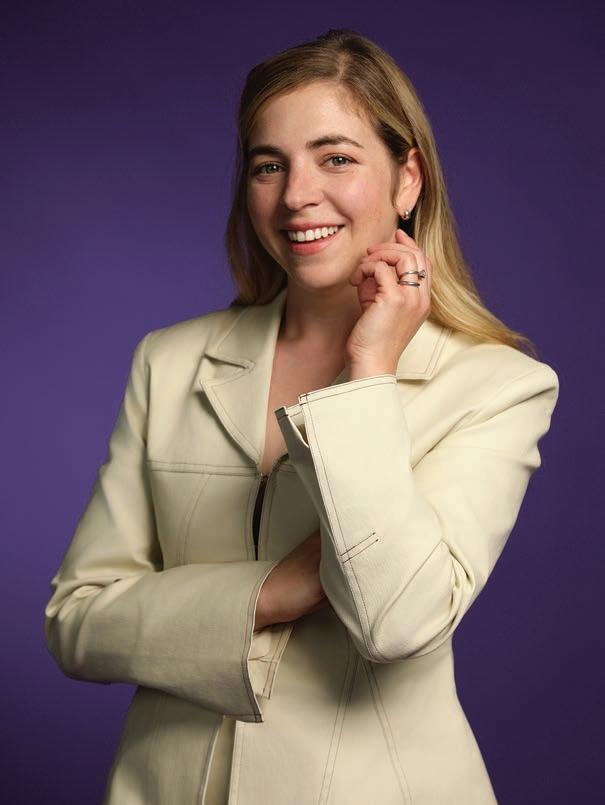
“We’re only as good as the night’s service. We’re not perfect, we’re not robots, but I think that’s really led to our success.”
Among her creations are a menu mainstay: a sunflower seed parfait with sour honey, licorice and bee pollen. There’s also often a seasonal meringue concoction. Currently, it’s a cylinder of raspberry meringue filled with vanilla skyr, raspberry sorbet and fresh raspberries; it’s
topped with raspberry fluff, and the diner breaks it open like a creme brulee.
Elske has been awarded a Michelin star, one of the highest honors in the restaurant world, every year since it opened in 2016. Posey has also been a James Beard Award finalist, most recently in June in the Outstanding Pastry Chef or Baker category.
“We’re only as good as the night’s service,” Posey says.
“We’re not perfect, we’re not robots, but I think that’s really led to our success.”
Ally Marotti
His negotiating prowess helped shape a rejuvenated 2024 roster and put the Bears in the top third in the league by future salary cap space, meaning the team is in position to attract more top-tier talent.
Poles’ combination of football smarts and empathetic management style turned him into a rising NFL front office star, says Scott Pioli, a longtime NFL team executive who gave Poles his first job in the league in 2009 when he was general manager of the Kansas City Chiefs.
“Ryan is extremely disciplined, yet he’s also not afraid of risk — as long as it’s thoughtful,” Pioli says. “He believes in analytics and he believes in his gut.”
Winning teams that boost civic pride can also give pro sports teams negotiating leverage with legislators for stadium financing. Poles says he doesn’t feel any extra pressure to win because of the team’s ongoing lakefront stadium push, but sees an on-field resurgence as the perfect stage-setter for a new home.
“It just feels like we’re in a space where the roster is going to take off. . . .What a great way to create that excitement for the stadium to be built.”
Bobby Reddy Jr. understands how to put things together.
Reddy was at the University of Illinois Urbana-Champaign and on his way to earning a doctorate in electrical and computer engineering when he found himself drawn to biomedical engineering, where new ground was being broken in critical care and artificial intelligence.
In 2014 he helped launch Prenosis, the U of I biotech spinout that’s built an AI tool to detect sepsis, a serious, unpredictable infection that moves quickly and is hard to identify, leading to emergency department and hospital deaths.
Sepsis “kills millions of people every year — more than all cancers combined,” according to Prenosis, citing a study from The Lancet. Earlier this year, the U.S. Food & Drug Administration granted Prenosis’ Sepsis ImmunoScore the first de novo authorization for an AI-driven sepsis detection device. A few weeks later, Prenosis announced Reddy and his team had put together a huge distribution deal with health care giant Roche Diagnostics.
What’s unique about Prenosis’ AI tool is not the strength of its number crunching, but how it synthesizes information about the individual patient, their health history, the way their immune system is reacting and the presence of biomarkers for sepsis, offering a whole picture of the patient and their sepsis risk.
“It is about taking millions of data parameters and measures over time and combining them with what’s happening with this particular patient, and then designing a risk score that doctors really understand what to do with,” Reddy says.
“I like working on a problem,” he says. “Here, I can bring all my experience to bear on the problem.”
“Bobby uses his background from engineering and integrates it with medicine, and then a dose of practicality, in order to figure out how to actually make a change,” says Dr. Nathan Shapiro, professor of emergency medicine at Harvard Medical School and an attending physician at Beth Israel Deaconess Medical Center in Boston.
ImmunoScore’s FDA approval is too recent for the device to have led to material sales increases. But the company says its breakthroughs in predict-
Senior vice president of national retail, c resco Labs
Alittle boredom can take you a long way. Cory Rothschild broke his leg when he was 2, and his great-aunt gave him a battery-powered keyboard to pass the time while he was being carted around in a wagon. People took notice when he started playing back nursery rhymes from memory. Soon he was taking violin lessons. He played his first paying gig, a wedding, when he was 8.
Bored at his middle school, he was accepted into the John Burroughs School, a small private prep school in St. Louis, where he won an essay contest asking him to name five famous people he’d like to meet. Although he’d already decided against a music career, Rothschild said meeting violinist Itzhak Perlman “changed the way I thought about what would be possible in life.”
That’s one reason Rothschild gave up a top marketing job at Gatorade three years ago to get into the cannabis business at Chicago-based Cresco Labs.
“It was an opportunity to make people’s lives healthier and happier at scale,” he says. “It felt like the moment where there would be huge opportunity and brands would be
the difference between success and failure.”
As head of marketing, Rothschild led creation of new brands and launched an e-commerce platform and a loyalty program.
He suggested Cresco help create an award-winning documentary about a Michigan man who served 25 years for a lowlevel cannabis crime. It’s an approach he learned at Gatorade, which used its marketing budgets to fund documentaries. He also led Gatorade to be a podcasting pioneer, says his former boss there, Lauren Fritts.
Rothschild had made his mark at Gatorade parent PepsiCo as part of a team that turned around Propel, an enhanced water drink that became the company’s fastestgrowing legacy product.
“I still call him all the time for advice and to bounce things off him,” says Fritts, now a senior vice president for Major League Baseball. “The balance he has between being an analytical thinker and a creative problem solver is special.”
Three years into his Cresco tenure, Rothschild made the leap from marketing to operations. He now runs its retail business, which has 1,300 employees at 73 stores in

ing serious infections have landed it significant grant money: This year, Prenosis expects to see some $4 million in grants and services revenue, bringing total funding to more than $24 million, including contributions from the Centers for Disease Control & Prevention, the Department of Defense, the National Science Foundation and the National Institutes of Health.
Shapiro, Prenosis’ head adviser for clinical research, says he began working with the Chicago-based company about three years ago when he heard Reddy’s pitch and understood his idea went further than simply screening for sepsis biomarkers.
“I think he is a visionary CEO,” says
Shapiro. “He’s team-oriented, very good at listening, taking people’s opinions and synthesizing them. You can have all these theoretical ideas, but in the medical space, if you don’t figure out how it is going to work managing a patient, you are not going to make a difference.”
Reddy, says Shapiro, is focused on making a difference in patients’ lives.
“My core mission is to see things differently,” Reddy says. “To come in and see the individual patient, see individual biology. You can have protocols and data and use standard flowcharts, but humans don’t work that way. Patients need to be seen and heard.”
Jon Asplund

“The
Senior director and wealth adviser, Mercer Advisors
Dane Sauer says a focus on lower-net-worth households is critical for the growth of a firm traditionally focused on clients with $1 million to $10 million.
“Something that I have been passionate about for a long time was, how do we focus on the client that has, let’s say, half a million dollars, three-quarters of a million dollars, and give them really sound financial planning?” says the head of Mercer Advisors’ Chicago market.
He was key in starting the company’s Wealth Path unit, which launched in March 2023 with $700 million in assets under management and 1,400 clients. The unit has since grown to over $1.6 billion in assets under management and 3,000 clients.
For those so-called HENRY — high-earning, not-rich-yet — clients, Sauer says, financial guidance is crucial to ensure their wealth continues to grow.
“When you have $700,000, you can make the wrong decision and run out of money,” he says. “When you have $20 million, it’s very hard to run out of money.”
“I still call him all the time for advice and to bounce things off him. The balance he has between being an analytical thinker and a creative problem solver is special.”
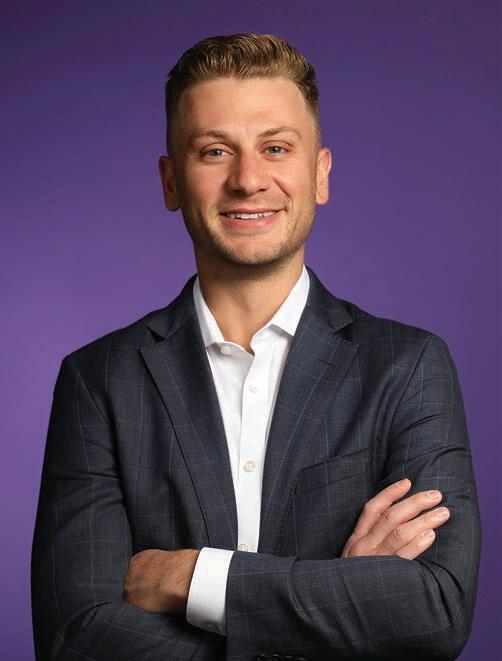
Sauer takes that guidance position outside of work, too. He was an early volunteer at 3rd Decade, a program providing wealth education and financial mentoring for young adults.
“We kind of consider him as one of our pioneers in helping us grow,” says Joe’Mar Hooper, CEO at 3rd Decade. “He is one of the folks who helped us have that proof of concept that things actually work.”
Hooper notes that the 3rd Decade participants working with Sauer saw their net wealth increase by $45,000 over their two years in the program.
Sauer, who grew up in the western suburbs, worked for Mercer in Texas for seven years before moving back to Chicago to head the firm’s growth efforts here.
“There is a ton of potential here,” Sauer says. “We just haven’t built out the presence that we would expect to.”
Mark Weinraub
“We kind of consider him as one of our pioneers in helping us grow. He is one of the folks who helped us have that proof of concept that things actually work.”
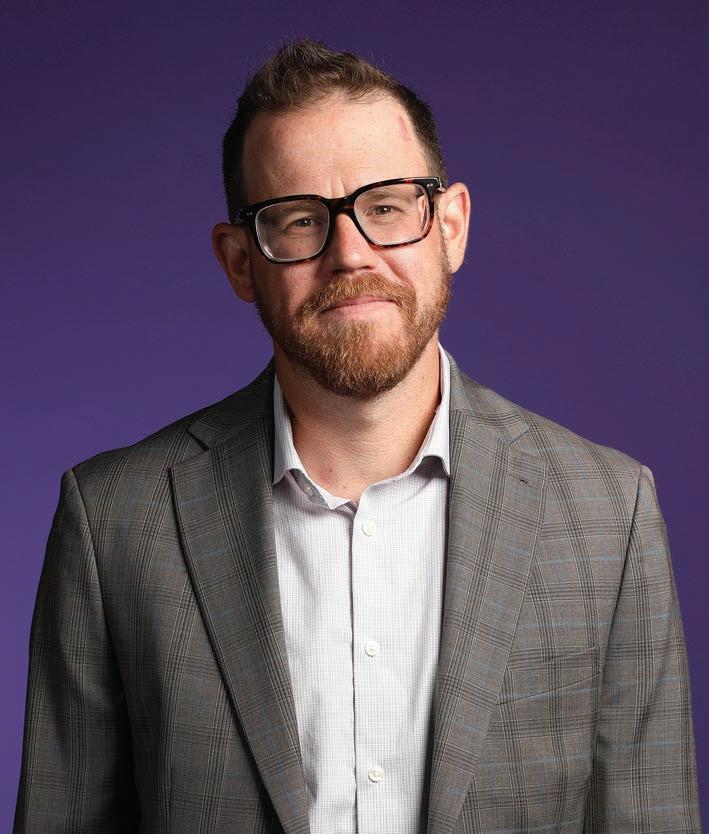


Vice president of government and public affairs, Aon
Daniel Serota serves as the top lobbyist for Aon, overseeing the insurance brokerage’s public affairs budget, directing its political action committee funding and evaluating the risks of critical issues such as cybersecurity, artificial intelligence and climate change.
But he also sees one of his key functions as building the company’s talent base from the bottom up and serving the community while doing so.
In 2016, Serota started an apprenticeship program within Aon, providing scholarships for students working toward an associate’s degree at Chicago-area colleges while interning at the company — and then offering them a full-time job when their studies are complete.
Aon’s global head of public affairs and policy and a Cook County commissioner.
Working with Serota, “We joke and say that we are the party of yes,” Gainer says. “How do you figure out a way to get a good answer that delivers value for everyone?”
Serota also is a member for the Illinois Workforce Innovation Board, appointed by Gov. JB Pritzker, and advises the U.S. secretary of labor on the national apprenticeship system as part of the Advisory Committee on Apprenticeship.
Working with Serota, “We joke and say that we are the party of yes.”
“It is a great win-win because we’re able to help the community, but we are also helping ourselves,” Serota says. “We are actually helping our workforce and we are helping our managers keep talent, to train them and also keep them long term, and our retention rate has been extremely high.”
Serota expanded the program outside of Aon to create the Chicago Apprentice Network, currently encompassing more than 100 employers and 2,000 apprentices across the Chicago area.
One of his biggest strengths is taking the time to develop relationships with the people he works with and learning how to best deliver what they are looking for, says Bridget Gainer,
He’s a 2022 graduate of the Edgar Fellows program, an initiative formed by former Illinois Gov. Jim Edgar that brings together leaders from various fields to address challenges facing the state.
The program was invaluable to Serota, as his job requires him to keep a broad perspective when lobbying both Democrats and Republicans.
“It was a really awesome experience, because you really meet both sides of the aisle and you really understand both sides of the issue,” he says, “but really learning about how to become more bipartisan and actually coming together and agreeing on things.”
Mark Weinraub





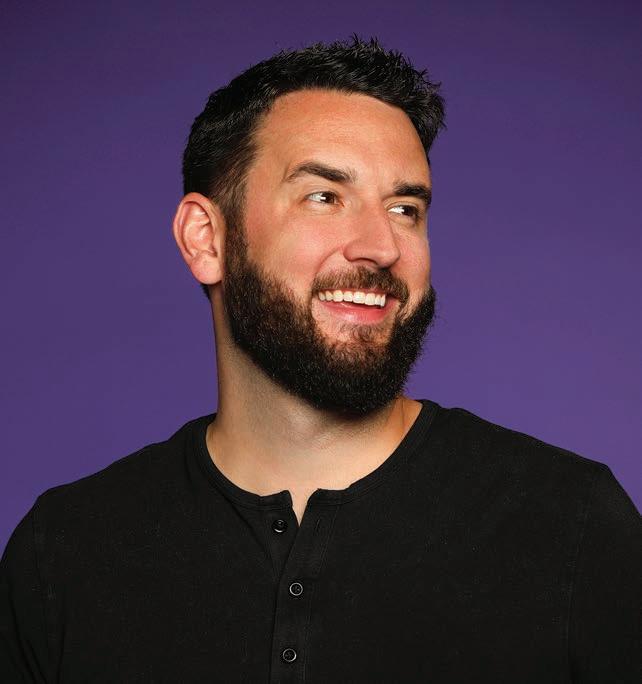
c hief medical officer, r ush Health
Right after graduating from the University of Illinois with a degree in economics, Dr. Garth Walker was an AmeriCorps fellow, further exposing him to the glaring racial and economic health care disparities that ultimately shaped the type of physician he’d become one day.
That experience in Washington, D.C., persuaded the Hyde Park native to return to Chicago to pursue a medical degree at the University of Illinois Chicago’s Urban Medicine Program, which trains physicians on how to address the root causes of poor health outcomes among the most vulnerable populations.
Many years later, Walker’s résumé includes a long list of high-profile and impactful health care roles. He’s been an emergency room doctor at UChicago Medicine and the Jesse Brown VA Medical Center, as well as a deputy director for the Illinois Department of Public Health under Dr. Ngozi Ezike’s leadership during the height of the COVID pandemic.
“What I’ve tried to do is be thoughtful around identifying roles where I’ll really be able to speak to social determinants of health and what that means for health care and what that means for Black and Brown communities,” he says.
But among his most impressive roles was serving as a White House fellow a few years ago, working for the U.S. surgeon general on solutions for deteriorating youth mental health, health care worker burnout and gun violence.
“He just understands health care, how it works, the politics behind it and the challenges that we’re facing in the
Singley,
Founder and ce O, r eloShare
Matt Singley built a tech company around solving a unique but overlooked problem: helping social service agencies discreetly rent hotel rooms for victims of domestic violence and sex trafficking.
The challenge was persuading major hotel chains to dump the industry-standard practice of requiring IDs from guests. Singley convinced hotels it was safer for them and the guests not to require IDs, says Brian Dean, head of sales for Wyndham Hotels.
“It was ingenious,” he says. Once Singley challenged their assumptions, “senior-level leaders just got it.”
About 1,000 of the chain’s 6,000 hotels are part of ReloShare’s SafeStays program. It now operates nationwide, with more than 18,000 hotels.
Singley launched ReloShare to solve a corporatetravel problem. But when the pandemic sidelined road warriors, he had to pivot. It proved fortuitous.
The company roughly quadrupled headcount in the past 18 months to about 50 employees. Singley declines to disclose revenue, but he says it’s growing faster than headcount and the company is profitable.
“It’s a goldilocks company,” Singley says. “You
feel great about what you do, and you do not have to rely on other people’s (money) to do it.”
ReloShare launched software that allows homeless shelters to find out in real time who has space, rather than manually calling individual shelters. The company also contracted with property owners interested in providing shelter to waves of migrants who were bused to Chicago from Texas.
Singley is branching into new areas, such as providing emergency shelter during disasters. The platform was used by hotels in California earlier this year to house people during a natural disaster.
Singley grew up in Orion, a small town near the Quad Cities, and got his start as an engineer in the power industry after graduating from Bradley University in Peoria with a degree in mechanical engineering. He spent several years working at nuclear power plants before turning a real estate side hustle into his day job.
“He’s a founder’s founder. People root for him,” says Amanda Lannert, CEO of employee benefits tech company Jellyvision and an active startup investor (though not in ReloShare). “This is not his last company.”
John Pletz

future,” says Dr. Omar Lateef, Rush University System for Health’s CEO and Walker’s boss. “When you meet a person like that, you just want him in your organization.”
Walker first joined Rush as senior medical director of value-based care in 2022 and was quickly promoted to be chief medical officer of Rush Health, the organization’s clinically integrated network. Walker’s role requires him to ensure Rush is meeting care quality standards and achieving cost savings for 160,000 patients represented by various value-based care arrangements. The job demands a delicate balance of maintaining high health care quality and achieving financial savings.
Under his leadership, Rush earned $32 million in performance-based incentives for shared savings efforts last year. Walker also led Rush in establishing a partnership with CVS Health on a program that’s focused on strengthening primary care outcomes across the Chicago area.
Walker, born to Jamaican immigrant parents and educated at public schools like Whitney Young Magnet High School, still lives in Hyde Park with his family. His wife, Elsa Andrianifahanana, a partner at Jones Day, is also on this year’s 40 Under 40 list.
The two met in 2013 while Walker was a fourth-year medical student and Andrianifahanana was a firstyear law firm associate. They now have two children under age 6.
How does he make it all work?
“Like any relationship, we’re very busy, but we always try to make time for each other,” Walker says. Katherine Davis
“He just understands health care, how it works, the politics behind it and the challenges that we’re facing in the future. When you meet a person like that, you just want him in your organization.”
Daniel Wang is a born tinkerer who wanted to design computer chips for gaming. Then he found a more demanding design challenge: the human body.
Wang is one of the first people hired to lead a research group at the Chan Zuckerberg Biohub Chicago. His team’s goal is to develop a device that can repeatedly sample cells and molecules non-invasively, monitoring how they interact. The goal is to better understand inflammation, which is the underlying cause of many diseases.
Unlike existing diagnostic tools, which rely on blood or other samples gathered at a single point in time, Wang wants to sample inflammation at different times and locations. It’s the sort of moonshot contemplated by the Chan Zuckerberg Institute’s $250 million research grant.
Wang grew up in China, where he built a radio from a kit when he was in first grade, enabling him to tune in to broadcasts from Taiwan. He soon built a computer and went to college to study electrical engineering.
Wang moved to Canada for graduate school, but it was challenging to find funding for chip research. He gravitated toward biotech, making a mark by using his engi-
“The buzz at the firm is, ‘It’s time to get this guy into court more often.’ ”
neering expertise to come up with a way to mass-produce a device used for capturing and releasing cancer and immune cells.
At the University of Toronto, Wang met Shana Kelley, who supervised his research into capturing cancer-fighting cells from blood rather than relying on tumor surgery. He joined Kelley when she left for Northwestern University. Last year, they launched a startup, CTRL Therapeutics.
“To have some very cool findings and papers in major journals is great. To have something so close to potentially being a commercial treatment, that’s very unusual,” says Jochen Lorch, director of the head and neck cancer program at Northwestern University, who is collaborating on a pilot study with CTRL Therapeutics.
Kelley became president of the Chan Zuckerberg Biohub in Chicago and soon hired Wang as a group leader. “He has an outstanding track record of making scientific breakthroughs,” she says.
Wang credits his parents, who were government workers, with letting him follow his curiosity.
“They let me explore,” he says. “I appreciate the freedom they gave me.”
John Pletz


Eric White was just 6 years old when he showed promise as a legal advocate. Responding to a parental reprimand, he said: “I’m not talking back. I’m just debating you.”
A trial lawyer, White says he is all about the art of persuasion. At Kirkland & Ellis, along with former Illinois Attorney General Lisa Madigan, he persuaded 70some colleagues to volunteer for what turned out to be a two-year investigation of the city of Minneapolis and its police department after the 2020 murder of George Floyd and its powder-keg moment for American society.
The report for the Minnesota Department of Human Rights found probable cause that the city and police engaged in a “pattern or practice of race discrimination” and recommended changes to improve police oversight and accountability.
“He played an instrumental role in getting high-quality lawyers involved across the country,” says Irina Vaynerman, the department’s deputy commissioner.
White says it was an easy sell. “When I asked associates to be on the case, they would burst into tears.”
Now at Winston & Strawn, White this summer won his first case as a lead lawyer at trial, representing, also on a pro bono basis, a state inmate who won damages for being handcuffed behind his
back despite a medical disability.
White’s paying clients have been huge corporations battling mass tort and product liability suits, such as oil giant BP, a Kirkland client that prevailed against hundreds of personal injury plaintiffs following the 2010 Deepwater Horizon spill.
His friends tell him, “ ‘We don’t understand your draw to big, bad clients,’ ” says White, but for him, “it’s follow the science, which shows you cannot draw a link between the exposure and the current alleged circumstances.”
White grew up in Tampa, Fla., the son of a physical therapist and a teacher, and participated in speech, student government and, yes, debate. During his senior year at the University of Florida he was the producer of Gator Growl, a studentrun homecoming extravaganza with a budget topping $1 million.
Law school at Northwestern University brought him to Chicago after he completed a sixth-grade Teach for America assignment in Charlotte, N.C.
White left Kirkland last year for Winston, figuring he would have a better shot at making equity partner and a shorter path to heading up trial teams. After his recent victory, he says, the strategy seems to be working.
“The buzz at the firm is, ‘It’s time to get this guy into court more often.’ ” Steven R. Strahler

Muskegon opted to allow current licensees a one-time transfer of their license if they sell their property
By
As part of a new ordinance regulating how many short-term rentals can operate in the city, the Muskegon City Commission opted to allow current license holders a one-time transfer of their license if they sell their property.
The Muskegon City Commission passed the new short-term rental ordinance at its Oct. 15 meeting, with commissioners Rachel Gorman and Willie German, Jr. voting against the resolution. The ordinance will go through a second reading and final vote at the Oct. 22 commission meeting because the vote on Oct. 15 was not unanimous.
The short-term rental ordinance uses an overlay district approach that splits the city’s residential districts into 11 zones that align with U.S. Census Bureau tracts. The number of short-term rentals in each zone will be capped at 4% of the zone’s total housing units. The ordinance passed in its first reading on Oct. 15 differs from what the Muskegon Planning Commission recommended for approval at its Sept. 26 meeting, which did not allow transferability of any short-term rental licenses.

“Between the planning commission meeting and tonight, staff had heard that there were a number of commissioners interested in seeing transfer abilities different than what was (pre -
sented) in the ordinance originally,” Jonathan Seyferth said at the Oct. 15 city commission meeting.
Because of that, city staff crafted a resolution the city commis-
Congratulations to these exemplary brokers for being recognized as the top commercial real estate leasing professionals in Chicago.
David MahoneyNancy Pacher
Steve Steinmeyer Savills CBRE JLL
We appreciate your collaborative partnership in helping companies find the workplace they need to thrive. We wish you all continued success!
sion ended up passing at the meeting that allows all current short-term license holders the ability to transfer their license one time if they sell their property, he said.
Mayor Ken Johnson described the one-time transfer as a “compromise” intended to give current short-term rental operators the ability to recoup their property value if they decide to sell.
As well, the ordinance aims to lower the number of short-term rentals in neighborhoods reaching the 4% level of the neighborhood’s housing units.
The Beachwood-Bluffton neighborhood in the westernmost part of the city has 73 registered shortterm rentals, which is the highest concentration in Muskegon, making up 8.4% of the housing units there, according to city data. It is the only neighborhood over the 4% cap at the time the ordinance passed.
About 240 short-term rental properties are currently registered with the city of Muskegon, 177 of which are located in the residential districts that would fall under the ordinance’s cap restrictions, if passed.
As long as the properties are in good standing with the city, all of the existing short-term rentals would be allowed to continue operating in the neighborhood as long as they renew their licenses, according to the proposed ordinance language.
Several residents spoke out passionately against and in favor of the city’s ordinance allowing any level of license transferability.
Jeff Borges is a city resident and operates his parents’ house he grew up in as a short-term
rental in the Beachwood-Bluffton neighborhood. He is against outof-town residents operating shortterm rentals in the city, but wishes the city would allow perpetual license transferability.
“Selfishly and personally, I want that ability to get the most value out of my house when I sell it in the next five or six years,” Borges said during public comment.
As well, a Beachwood-Bluffton resident spoke out against the existence of short-term rentals in the city and the ability of their licenses to transfer in a property sale because she said it will lower the values of homes such as hers that are located next to rentals.
During the meeting, commissioners also called out the ordinance as an imperfect solution to a complicated problem. Commissioner Jay Kilgo voted for the ordinance, but expressed a desire to look at it more in the future.
As a small-business owner herself, Commissioner Destinee Keener shared a similar sentiment.
“I wanted to be fair. I understand business is business and we have to have income and this is a way to create extra income,” Keener said at the meeting. “At the same time, I also have to be supportive of the individuals that stay here year-round.”
Deliberating the transferability of short-term licenses has not been easy for any of the commissioners, Keener added.
“We’re giving a little bit to everybody and trying our best to make everyone happy,” she said.
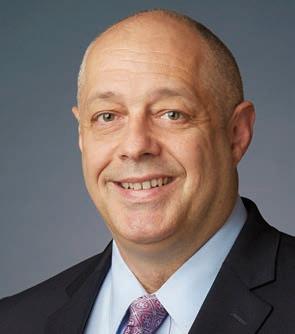
President McAndrews, Held & Malloy
312-775-8206
bsurrette@mcandrews-ip.com
Bob Surrette is a Shareholder and President of McAndrews, Held & Malloy. He focuses on the resolution of intellectual property (IP) and technology-related disputes. Bob has extensive experience in preparing and bringing to trial complex IP cases. He also advises clients on transactions involving IP and technology, including mergers, asset transfers and licensing.
Many companies miss opportunities to monetize their intellectual property (IP) via effectively and strategically managed approaches that generate significant additional revenue, provide competitive advantages and fuel growth.
There are two main components in a well-designed IP monetization program:
A comprehensive IP audit is the best way for a company to identify assets for monetization. Effective audits receive input from senior leadership and all other key functional areas— such as marketing, sales and R&D —and result in a classification of the company’s overall IP assets and a valuation of each. To be most effective, the process requires a thorough, objective understanding of the company’s current position in its market, the source of its competitive edge, IP strategies of the business’ competitors and what the company must do to maintain or grow its competitive position.
This process will help identify those IP assets that have both immediate and
long-term commercial value. For some, that commercial value will be derived from the fact that those assets provide the enterprise a competitive edge. For others in non-core technologies, monetization becomes a smart option.
Once a company identifies the IP assets that it wishes to monetize, it then should move to selecting the most appropriate method.
Here are four common monetization strategies:
• LICENSING: In a typical licensing scenario, a company grants another entity the right to use certain IP assets under agreed-upon conditions and in exchange for payments. Versatile and widely accepted, licenses apply to any form of asset, including patents, trademarks, copyrights and trade secrets. Companies favor licenses because they retain ownership of the licensed IP asset and obtain revenue through payments under the license terms. A company will need to determine whether the license grant is exclusive or non-exclusive to the
other party and whether there is a geographical limitation on the license grant. Each of those decisions will be informed by strategic elements.
• IP SALE: The sale of an IP asset provides immediate cash flow for a company. The most obvious drawback of an IP sale is that the selling company relinquishes all future rights and profits associated with the sold IP. Companies generally utilize IP sales for non-core IP assets that no longer align with the company’s future strategy, like patents nearing their expiration date and those that do not relate to current product mix. Compared to other strategies, an IP sale is a relatively straightforward transaction with few ongoing legal or operational complexities.
• JOINT VENTURE: In a joint venture, two or more companies collaborate to develop and commercialize IP assets and share in both the risks and rewards. A company will generally utilize a joint venture when it does not want to bear the full burden of commercializing an IP asset.
• IP ENFORCEMENT: Enforcement of an IP asset through litigation is a powerful method of monetization.
Patent infringement lawsuits, for example, can result in substantial settlements or damages awards. Strategic enforcement also sends a signal to the market that the company is serious about protecting its innovations, deterring future infringements. Although litigation is costly and has a longer timeline to payout compared to other monetization strategies, it can lead to enormous financial and competitive rewards.
IP monetization is not a one-size-fitsall strategy. It requires buy-in from all levels of a company and a thorough understanding of both the markets in which the company competes and the scope of its IP assets. But properly executed, successful monetization can unlock significant value.


Longtime business owners in Rogers Park are grappling with the school’s acquisition of several commercial properties in the area, raising concerns about the future of the community
By Pawan Naidu
Loyola University has acquired several properties in Rogers Park over the past several years, raising concerns among residents and local business owners about potential displacement and the future of the community.
The university says its expansion plans are necessary to meet student needs and grow the institution, and that the larger community will benefit. But some residents fear people and businesses will be driven out.
The purchase of 1226-1234 W. Loyola Ave. late last year captures the dueling interests of the community and Loyola. Roman Susan, a nonprofit art gallery, is working to save the residential building from demolition, which the university plans to pursue.
Kristin Abhalter-Smith, who owns the art gallery along with her partner, Nathan, said many of the building’s residents didn’t know the property was for sale until the deal closed. The building has about 30 residential units, with businesses occupying the ground floor.
“We were hoping that since our lease was good until then (September 2025), all the other people would get to stay, but Loyola let all the residential leases expire,” she said. “If we’re increasing the amount we’re spending on rent, everything has to go up in our budget, and that could mean an exponential increase in our budget. . . .We

cate them to new housing, ensuring their needs were met,” said Kana Henning, vice president for facilities and campus management. “Some tenants moved into Loyola properties, others moved to non-Loyola housing and some relocated independently without assistance.”
“Having the university in the neighborhood brings a lot to it, but I wish they wouldn’t exclude the neighborhood that’s already there. I’m hoping to work with them to bring more local businesses to the neighborhood.”
Roberta Schmatz, owner of Archie’s cafe
haven’t located anywhere else that serves us as well as the location we’re in.”
Loyola told Crain’s it is honoring all residential and commercial leases it took on after the purchase and is supporting tenants’ “transitions based upon their individual needs.” Some leases were extended, with Roman Susan being the longest.
The university purchased the building last year for $3.1 million after being approached by the owner. After determining adaptive reuse would be “unfeasible,” it decided not to renew leases once they expire.
“Loyola worked directly with each residential tenant to relo-
But some building tenants feel they are losing their sense of community with this building and others being sold. Archie’s cafe, also located in the building, closed its doors a few weeks ago without immediate plans to reopen another permanent location. The owner, Roberta Schmatz, has been communicating with the university about her concern over the lack of neighborhood input into the school’s expansion plans.
“I would really like to see it be a more blended situation instead of just shutting off the street and making it inaccessible to the community,” she said.
“Having the university in the
neighborhood brings a lot to it, but I wish they wouldn’t exclude the neighborhood that’s already there. I’m hoping to work with them to bring more local businesses to the neighborhood.”
Loyola owns several commercial buildings along North Sheridan Road, North Broadway and West Granville Avenue. It also owns a residential building at 1241 W. Loyola Ave. Additionally, Loyola has two vacant lots that could be combined into a large campus building, as reported by the Loyola Phoenix.
The Vedgewater Community Garden, at 6300 N Broadway, is a nonprofit neighborhood garden on land owned by Loyola. Next door, at 6314 N. Broadway, is the closed Edgewater Antique Mall. The university is considering combining these properties for redevelopment.
Schmatz said that after pressure from the local community, Loyola began listening to concerns. The university created an interactive map that lets people express their ideas for the neighborhood. Some examples include a desire for a new recreational sports facility and worries regarding the future of St. Ignatius Church.
Local officials have taken notice of these moves by Loyola and are working with the university to facilitate the relocation of tenants.
“ Loyola plans to demolish the
building at 1234 W. Loyola Ave. over the objections of myself, Sen. Mike Simmons, Rep. Kelly Cassidy, the tenants and our community as a whole,” Ald. Maria Hadden, 49th, wrote in a newsletter to constituents last month.
“Under pressure from my office and the community, Loyola has offered assistance to residential tenants for relocation, but refused some of our other suggestions that would’ve found an adaptive reuse of the building that has been the home of many memorable experiences for the Rogers Park community,” Hadden wrote.
Hadden and Ald. Leni ManaaHoppenworth, 48th, along with state Sen. Mike Simmons, did not respond to requests for comment from Crain’s.
Edge Art owner Maggie Roach, another business owner in the building, has lived in the neighborhood since graduating from Loyola in 1966. She believes what Loyola is doing is “harming people’s lives.”
“I told the previous owner he gave us (business owners) all the opportunity of a lifetime,” she said. “As for the tenants upstairs, many of whom are minority or disabled, they were allowed to live near to transportation in a thriving, not scary, community. If they live in a different neighborhood, they might not feel as safe or stimulated.”




YWCA Metropolitan Chicago’s 52nd Annual Leader Luncheon, She the People, will celebrate the individual and collective actions of women are bringing to the vision of a more perfect union into greater focus, for all of us. Join us on October 25 to celebrate the individual and collective actions women across a diverse array of sectors have taken, and will continue to take, to help women, girls, and families.
PRESENTING SPONSORS
HOST COMMITTEE SPONSORS


PATRON SPONSORS



SUPPORTING SPONSORS





PRESENTING MEDIA SPONSOR


BENEFACTOR SPONSORS

Edward and Lori Taylor







Cindy C. Burrell







and



MEDIA SPONSORS






To place your listing, contact Suzanne Janik at (313) 446-0455 or email sjanik@crain.com .www.chicagobusiness.com/classi eds
hasanopeninginLincolnshire,ILfor Anlyz,dev,dsgn&maintnSWfor prdcts&sytms.MS+3orBS+5yrsexpreqd.Telecompermit.ToapplyemailresumetoJobs@Zebra.com &refjob#7917326.Ifyouareanindvdalw/adisbility&needasstnceinaplyngforpsiton,contctusat workplace.accommodations@zebra.com.TheEEOistheLaw.Thepostersareavalblehere: https://www.eeoc.gov/sites/default/files/2023-06/22-088_EEOC_KnowYourRights6.12.pdf; https://www.dol.gov/sites/dolgov/files/ofccp/regs/compliance/posters/pdf/OFCCP_EEO _Supplement_Final_JRF_QA_508c.pdf
seeks inChicago,IL.toDevelopandmaintainan ecosystemofdashboards,datasourcesandsupplementalmaterialthatisfocusedonaccuracy, transparencyandeaseofuse.100%Telecom.perm.w/inU.S."Supervisesupto7employees".Applyat jobpostingtoday.comRef:76668.
seeksSr.SAPFICOAnalystinLisle,ILtoberesponsiblefordesign,implementation,and supportofallaspectsoftheFinanceandControllingareasforthebusinessunit.Hybridin-office/remote position.Applyatjobpostingtoday.comJobID#10718.
seeks - (multiplepositions)in Chicago,ILtoDesign,write,andmaintainEnfusionsoftwareforourcustomerclients.100%Telecom. perm.w/inU.S.Applyatwww.jobpostingtoday.comRef:98262
seeks nGlenEllyn,ILtoleadtechnicaldesignof solutionsdeliveredby.NETtechnologiesandsuperviseactivitiesoftechnicalteams.Applyat www.jobpostingtoday.comRef#80831.
seeks inRiverwoods,IL,to systematicallydevelopasetofautomatedtestsbasedontheextensivebacklogoftestautomationuser stories.Telecommutingpermitted.Applyatwww.jobpostingtoday.comRef#53378
seeks inRiverwoods,IL,toImplement theSAPBusinessAdd-Ins,Enhancements,andSAPNotesformigrationprojectsacrossWKbusiness units.Telecommutingpermitted.Applyatwww.jobpostingtoday.comRef#36036
His death on Oct. 4 followed the passing last month of his successor, ty Fahner, who led the Chicago-based firm as co-chair and then chair after serving as Illinois attorney general
By Steven R. Strahler
In 1984 the long-established law firm of Mayer Brown & Platt was in danger of capsizing when its biggest client, Continental Bank, imploded a month after key partners left to start a Chicago office for a rival Wall Street law firm.
Mayer Brown’s chief savior was not a table-pounding curmudgeon. Robert Helman was genial and small-statured, with not much literal weight to throw around. But he could turn tough when he had to and did so when he led the firm back from the brink. He put together a team to capitalize on what was left of the Continental relationship and then set about drawing in revenue-producing substitutes like Abbott Laboratories, Ameritech, Santa Fe Railway and the accounting firm Andersen.
Helman, who served as cochairman and then chairman of Mayer Brown from 1984 to 1998 and didn’t retire until earlier this year, died Oct. 4 at his Hyde Park home. He was 90 and had been in declining health before contracting COVID last month, according to his son, Adam. Helman’s death followed the passing last month of his successor, Ty Fahner, who led Mayer Brown as co-chair and then chair after serving as Illinois attorney general.
Helman was a centrist Democrat at a firm that was traditionally more welcoming than other Big Law firms in Chicago to people of his stripe. As chairman he diversified and democratized Mayer Brown further, elevating women and minorities. Debora de Hoyos became managing partner in 1991 and worked hand in glove with Helman in those efforts. The firm notably employed Lori Lightfoot, William Daley and the Rev. Jesse Jackson’s son, Yusef.
school, when he was only 22. He had skipped grades before graduating from Austin High School and attending the University of Illinois and Northwestern as an undergrad.
He was the first Jew employed by Isham Lincoln & Beale, then among the whitest of Chicago’s white shoe law firms, after it was pressured by a major developer client to do so, according to Helman’s son, and guidance by the law school dean John Ritchie. Helman began as a utility lawyer, representing Northern Illinois Gas (later Nicor), which had been spun out of Commonwealth Edison. When conflicts emerged at Isham in representing both firms, Helman and a senior partner jumped to Mayer Brown in 1967.
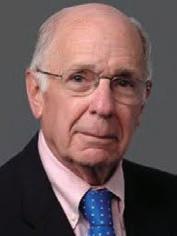
A Mayer Brown partner remembers attending an event at Helman’s home adorned with original art and Helman engaging with the partner’s art-conscious wife and remembering her name and interests during a gathering elsewhere a year later. Among works on the walls were Grant Wood and Henry Moore lithographs, according to Adam Helman.
Crain’s
When Jesse Jackson staged a Chicago version of the Rainbow Push Coalition’s Wall Street Project in 1998, Helman was Jackson’s go-between in recruiting local supporters in the business community for the effort to diversify high finance. “So far, I’ve had very few turndowns,” he told Crain’s that year for a story that cited Sears Roebuck and Ameritech CEOs and the city’s top bankers as backers.
Helman grew up on the West Side, the son of Nathan Helman, who became president of Mount Sinai Hospital, and Ester (Weiss) Helman, who ran the household and died the year Robert graduated from Northwestern University’s law
Over the years Helman succeeded the senior partner on that valuable account and moved beyond regulatory clients, taking on corporate transactions and other matters for major clients and in the 1970s joining the management committee. He forged strong bonds with CEOs and general counsels and was a relentless pros-
When Continental collapsed and was bailed out and ultimately sold by the Federal Deposit Insurance Corp., Helman scrambled to preserve what was left of a relationship that accounted for nearly a third of Mayer Brown’s revenue. The firms were so entwined they were headquartered in the same Greek-columned building at the foot of the LaSalle Street canyon. Helman refocused the relationship on the restructuring work involved in the bailout.
Simultaneously, a far bigger corporate dissolution was going on that benefited the firm — the antitrust settlement that resulted in the breakup of the Bell system and establishment of regional telephone companies like Ameritech.
“He didn’t overwhelm you, but once Bob got to know them, the leaders of major institutions turned to him for advice more than any Chicago lawyer of his time, maybe of any time.”
John Schmidt, a Mayer Brown senior counsel
pector for new business, spending evenings on that front after a day of lawyering.
“He didn’t overwhelm you, but once Bob got to know them, the leaders of major institutions turned to him for advice more than any Chicago lawyer of his time, maybe of any time,” said John Schmidt, a Mayer Brown senior counsel. On legal matters, “He was going to get it done, or keep at it until you finally found it couldn’t be done.” Inside the firm, “he had a knife that was very sharp if it was what the firm needed,” said Drew Beres, a Mayer Brown alum.
Helman had a broad range of intellectual and social interests, including the art world, that helped him connect with others. He was a co-founder and early president of the Legal Assistance Foundation of Metropolitan Chicago.
Assignments like that and for other new clients caught up in takeover battles more than compensated for the defections of six partners, including Schmidt and the late Wayne Whalen, and six associates to Skadden Arps Slate Meagher & Flom. (Schmidt later returned.) Mayer Brown was left with about 300 lawyers; today it has more than 1,900, though it has been outpaced by Kirkland & Ellis and Sidley Austin.
De Hoyos said Helman was a master of the full court press, with an open-door policy that had partners whizzing in and out of his office. She remembers his ability to rise from the weeds of one conundrum, switch to another and then back again, which allowed him “to get an enormous amount of work done.”
A memorial service is planned for later this fall.
Canopy, Chicago
Canopy is an awardwinning social impact architecture firm founded in 2009 on the belief that design can be used as a vehicle for positive change. Our work is defined by the people and places we serve. Andreea Micu, AIA, NCARB, CDT, has been vital to our team since 2017, leading projects for the studio at various scales, including Encuentro Square, a prominent new affordable housing development. We are delighted to elevate Andreea to Principal this fall. Joining Canopy in 2021, Irma Ayala has been a key leader on the Albany Terrance and McCoy Gaines CHA senior affordable housing projects, as well as Latinos Progresando new offices and community center. Recognized as a design and technical leader, Irma is elevated to Senior Associate.

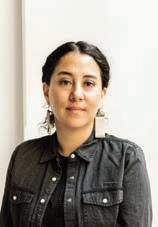
Ayala
Canopy, Chicago
Jackie Davis, AIA, NCARB,WELL AP, is a champion of community and trauma-informed design projects at Canopy, including CAWC and Jigzibik. She was recently appointed to Chicago Women in Architecture’s Ladders to Leadership program and joined Mayor Johnson’s Housing Advisory Committee. We are proud to promote Jackie to Senior Project Architect.


Kaminski
Canopy, Chicago
Baum Realty Group, Chicago


Skender, Chicago
Skender welcomes 25-year industry veteran Brian Bezanis as Project Executive, one of five seasoned new hires to support its growing commercial and residential building construction team. Bezanis comes from leadership roles at Sterling Bay, Smithfield Properties and Pepper Construction. His expertise in real estate development and construction management spans numerous large-scale commercial, residential and mixed-use projects, including 300 N Michigan, 160 N Morgan and 805 N LaSalle.

Since joining in 2021, Mark Kaminski, AIA, NCARB, LEED GA has brought a wealth of knowledge to projects such as the Encuentro master plan, South Park Plaza, and the Humboldt Park United Methodist Church adaptive reuse project. For his leadership in technical building performance, environmental stewardship, and Revit mentorship, we are pleased to promote Mark to Senior Project Architect.
Skender, Chicago
Skender welcomes 30-year industry veteran Don Koehler as Senior Superintendent, one of five seasoned new hires to support its growing commercial and residential building construction team. Koehler recently worked as Senior Superintendent at Lendlease Construction and previously at the Gammonley Group. His construction project experience includes The Saint Grand (218 E Grand), One Six Six (166 N Aberdeen), 448 N LaSalle, 1035 W Van Buren, and Lathrop Homes.

Since joining Canopy in 2020, Sabina Choragwicki has been a great asset to many projects, including Encuentro Square, the Starling pavilion, and Latinos Progresando. She has helped lead firm-wide initiatives such as the Housing for a Changing Nation exhibit with CAC, and other studio efforts. Canopy is pleased to promote Sabina to Project Associate. Ismael Vela has been a key team member on the Albany Terrace and Irene McCoy Gaines senior affordable housing projects, the Jigzibik urban Native American housing project, and has helped coordinate other firm-wide efforts, including Chicago Architecture Biennial exhibitions and the Between the Leaves publication since his start in 2019. Canopy is proud to promote Ismael to Project Designer.

Baum Realty welcomes Kerwin Alvero as an Associate/Broker. With expertise in financial modeling and digital marketing, Kerwin’s forward-thinking approach and leading-edge marketing strategies will enhance Baum Realty’s ability to serve a growing client base. Raised in Chicagoland, his relationship-driven style and market knowledge make him a valuable team member. Kerwin will play a key role across all asset classes, including landlord and tenant representation, as well as investment sales.

Wintrust Financial Corporation, Rosemont
Wintrust Financial Corp., a financial services holding company based in Rosemont, Illinois, with more than 200 locations across Illinois, Wisconsin, Michigan, Indiana, and Florida is pleased to welcome a new leader and announce a promotion. Pete Storey joined Wintrust Financial Corporation as the Senior Vice President, Chief Financial Officer for Wintrust Life Finance. Pete has spent the last 12 years making an impact in finance leadership. Sean Little was promoted to Senior Vice President, Senior Credit Officer at Schaumburg Bank & Trust Company, N.A. Sean joined Wintrust in 2013.



Skender, Chicago
Skender welcomes 15-year industry veteran Ricardo Lopez as Senior Superintendent, one of five seasoned new hires to support its growing commercial and residential building construction team. Lopez previously worked as Senior Superintendent at Lendlease Construction and holds a civil engineering degree from UIC. His construction project experience includes Cirrus (211 N Harbor) and Cascade (455 E Waterside), One Bennett Park (451 E Grand), and The Saint Grand (218 E Grand).

Skender, Chicago
Skender welcomes 12-year industry veteran Ryan Pieper as Senior Project Manager, one of five seasoned new hires to support its growing commercial and residential building construction team. Pieper previously worked as Senior Project Manager at Lendlease Construction. He has Master and Bachelor of Engineering degrees from Trine University. His construction project experience includes The Saint Grand (218 E Grand), Cirrus (211 N Harbor), Cascade (455 E Waterside), and One Bennett Park (451 E Grand).
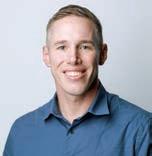




Bridgepoint Investment Banking, Chicago
Bridgepoint Investment Banking, a market-leading boutique impact investment bank, is proud to announce the addition of Mark Jones-Pritchard Managing Director to its Chicago office. Jones-Pritchard will co-lead Bridgepoint’s Consumer and Retail sector with Bridgepoint Managing Director Rob Schmidt. This addition expands Bridgepoint’s commitment to providing differentiated capital and M&A solutions to middle-market companies in the Chicago corporate ecosystem.
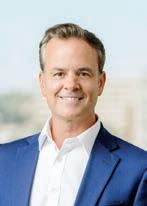
Agency veteran Jerremy Howell is joining BarkleyOKRP as Chief People Officer, a new position at the agency. He was previously at Publicis Groupe, where he held a variety of roles, most recently serving as VP, Talent & Organizational Development for the Publicis Health division. In his new role, Howell will work across all agency offices and will be based in Chicago. He will oversee an HR team of over 10 team members who support over 800 employees across its six offices.

Daniel Murphy Scholarship Fund, Chicago
Cindy Hallums has been promoted to Chief Executive Officer at the Daniel Murphy Scholarship Fund, continuing her nearly two-decade dedication to educational equity. Her journey with DMSF began as an Education Coordinator, and she has held leadership roles at Teach for America, KIPP, and Educators for Excellence. Rejoining DMSF in 2020, she led programs supporting 500+ Scholars. Cindy holds a BA from Rhodes College and a Master’s from the University of Chicago’s Crown Family School.

Wintrust Financial Corporation, Chicago
Kendra Castelloni was promoted to Co-Chief Executive Officer of Wintrust Private Client. She has over 25 years of experience delivering banking and wealth management solutions to high-networth individuals and closely-held and family-owned businesses. Her wealth of prior experience includes private banking and leadership roles with Wintrust, American National Bank, LaSalle Bank, and JPMorgan Chase. Kendra also sits on the Board of Directors of Bear Necessities Pediatric Cancer Foundation.
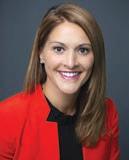
Skender, Chicago
Skender welcomes 13-year industry veteran Terez Sturrup as Project Manager, one of five seasoned new hires to support its growing commercial and residential building construction team. Sturrup previously worked as a Project Manager at James McHugh Construction. She has a Master of Engineering and Bachelor of Architecture from Illinois Institute of Technology. Her construction project experience includes The Elizabeth (225 N Elizabeth), Westerly (740 N Aberdeen), and The Sinclair (1201 N LaSalle).
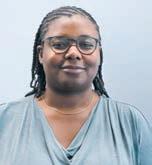

Wintrust Financial Corporation, Chicago
Tim Hannahs was promoted to Co-Chief Executive Officer of Wintrust Private Client. In addition to his newly appointed duties, he leads a team of investment management and planning professionals who serve the groups’ high-net-worth and business-owner clients. Before joining Wintrust in 2023, Tim spent 30 years at Fifth Third Bank in a variety of leadership and client-facing roles. Tim serves on the Boards of Kohl Children’s Museum of Greater Chicago and The Chicago Shakespeare Theater.
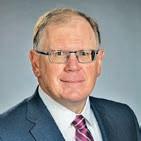



the five-bedroom, modernist-style home on the lakefront hit the market at $10.9 million, attempting to cross a threshold only two other houses in the North Shore to wn are known to have crossed I
By Dennis Rodkin
Amansion that overlooks Lake Michigan in Glencoe hit the market on Oct. 7 hoping to land the highest home price in that North Shore town in five years — or a decade if you don’t count housing development sites.
Dennis and Jane Carlton are asking $10.9 million for their five-bedroom house on a little more than 2.2 acres on Lakewood Road. While other homes have been listed for more, they ended up taking multimilliondollar price cuts.
The house was initially built in the early 1960s but “completely rebuilt, not just a rehab,” by eminent architect Tony Grunsfeld in about 2000, according to the listing agent, Annette Blumberg of Baird & Warner.
The house has all the hallmarks of the work of the prolific Grunsfeld, who died in 2011. Tall walls of black-framed windows and doors alternate with serene white plaster walls and ceilings for a crisp, daylit modernism. The living room’s fireplace wall has just two angled folds in it, giving it a simple but formal style. While it’s a lakefront property, there is no beach or stairs down the forested bluff to the water. Blumberg said she believes a buyer would be able to get the permits to make the shoreline usable. The walk down the bluff to Glencoe’s municipal beach is about a block south.
The house “is really beautiful and peaceful on a quiet street,” Blumberg said.
Dennis Carlton did not immediately respond to a request for comment, and Crain’s could not reach Jane Carlton.
The last time real estate records show a residential property in Glencoe selling for $10 million or more is January 2019, when developers bought a 12-acre estate on Green Bay Road with plans to subdivide it. The property is now in the hands of a different development firm that last month began work on a planned 29 homes on the site.
Setting aside that sale because it was not really a home sale so much as a commercial real estate
sale, the Carltons’ home on Lakewood is going after the highest price in Glencoe since August 2014, when Eric Lefkofsky and his wife, Elizabeth, paid $19.5 million for a lakefront estate on Glade Road. At the time best known as the co-founder and CEO of Groupon, he is now founder and CEO of health care firm Tempus.
Other homes in the elite suburb have been built for $10 million or more and might have a present value in that range, but they have not been in transactions.
The Carltons receive the tax bill on the Glencoe home at an address in Bethesda, Md., where Dennis, an emeritus professor of economics at the University of Chicago Booth School of Business, is listed as a research associate at the National Bureau of Economic Research.
Cook County records show the Carltons have owned the home since 1998, when they paid $2.16 million for it. That’s the equivalent of about $4.17 million in 2024 dollars. The amount they spent to rebuild it into its present, roughly 5,500-square-foot configuration is not in public records.
Glencoe’s highest home sale price in recent years was a little under $8.7 million, which buyers paid for a property on Longwood Drive in December 2021.
If the Carltons' home sells for close to its asking price, it will be the third Chicago-area home to sell at $10 million or more. The two that already sold are both in Chicago. In 2023, there were four sales at $10 million and up; in 2022, there were nine, the most ever.
Two other Glencoe mansions that staked their claim to the $10 million-plus realm in the past few years both ended up taking multimillion-dollar cuts.
One hit the market in 2022 at $13.8 million and sold in August of this year for $7.25 million.
The other is the extensively rehabbed historical mansion of the former head of Milwaukee’s Pabst Brewing, which went up for sale at $18 million in 2020. The price dropped to $12 million before the property went off the market unsold in April 2023.








according to the application.
The application doesn’t detail the size or use of future buildings on the property. But Related is not seeking zoning rights for any residential development on the site, which is part of the South Chicago neighborhood. Keeping its plan to commercial and industrial properties requires fewer environmental and engineering hurdles to clear than adding housing to the property and avoids a discussion about affordable housing that could otherwise slow down the project.
Previous plans for the South Works property have included a residential component, most notably a proposal from developer McCaffery Interests for more than 13,000 homes and 17.5 million square feet of commercial space on the land. After more than a decade of pushing for the project, it was scrapped in 2016 amid environmental remediation challenges at the site. Soil contamination concerns are also said to have played a role in thwarting another residential plan for the land from an Irish developer in 2018.
The research park stands to dramatically change the heavily residential South Chicago neighborhood west of the South Works property, a once-bustling community during the decades that the U.S. Steel mill was operating. At its peak during World War II, the South Side steel mill employed about 20,000 people.
A neighborhood group in the area has advocated for Related Midwest to sign a community benefits agreement with commitments that ensure local business-
From Page 1
scientific reason why the firm chose the Phoenix area; he happened to own a house there and knew some people in the area. There were also numbers to back it up: With demand brought on by higher inbound migration — the Phoenix metro area is projected to grow from about 5 million to 7.6 million residents by 2055, according to 2023 U.S. Census Bureau data — home prices have kept pace with pricier construction costs, he said.
“I love Chicago. I’m still, every day, looking for projects to do here and having a very difficult time at the moment,” Lev said. “The economics right now are not working so well around here. A lot of it is nobody’s fault.”
Chicago developer Rob Bond, co-founder and president of Bond Cos., also sees opportunity in Phoenix, where the firm is about to start a 560-unit apartment project and has a few other sites under contract.
“We think the market growth is there, the jobs are being created there, to warrant the size of the project, and the capital is following the growth,” he said.
Bond Cos. is also active in Nashville and Wisconsin. With the

es and residents get a lift from the project and retain access to nearby lakefront park space.
Two community meetings have been held so far about the project, and the United Way of Metro Chicago late last month announced it will co-lead the completion of a quality of life plan tied to the development that will be sponsored by Related Midwest.
Quantum is viewed as the next major leap in computing, using principles of quantum mechanics to create machines that can tackle far bigger problems at a time when traditional technology is bumping up against physical limitations. Harnessing subatomic particles to store, transmit and process infor-
firm’s most recent project in Chicago, a 113-unit apartment building in West Town, completed two years ago, the firm is focused on markets with better growth opportunities, Bond said.
“If you compare job growth on an absolute number or percentage number, their growth is stronger than what we currently have in Chicago,” he said. “As a developer you have to look at macroeconomic trends and understand what the economy is telling you when your business is dependent on growth.
We manufacture space — that’s what developers do.”
In addition to their own balance sheets, Chicago developers — and the financial institutions they need to back their projects — also have local governments’ financial challenges to worry about. Cook County’s real estate taxes are seen as high and unpredictable among real estate investors and developers, and the city’s projected budget shortfall is also a concern.
“It’s a zero-sum game: The municipalities have budgets — it’s got to come from somewhere. Last I checked, the budgets never go down. The taxes are going to continue to go up,” Lev said.
Developers have also cited regulations in Chicago that can make it harder for projects to pencil out —
mation holds the promise of exponential improvement in computing capabilities, which can be used to model everything from cancer to climate change and encrypt data more securely.
Part of landing the quantum campus development included the creation of a new property tax incentive for Related Midwest at the site. The Cook County Board of Commissioners last month approved a new Class 8 MICRO incentive that would reduce the tax rate at the site from 25% to 10% for 30 years. That tax relief still requires City Council approval.
Well known for developing luxury residential towers in Chicago, Related Midwest is one of the bus-
such as the requirement that developers who seek a zoning change make 20% of the units affordable — that other cities don’t have.
The other side of the picture is that as some developers focus their attention elsewhere, it creates opportunities for those who do pull off projects in Chicago.
Though Chicago isn’t getting the population influx that some other markets are, there’s still strong demand for rental housing to be met.
“It does create a void where nothing was happening and others tend to look in and say, ‘What am I missing, or what is the opportunity for us?’ if they don’t have to compete with someone who’s already doing a lot of work here,” Pryde said.
KTGY has worked with development firms based elsewhere in the Midwest, like Indiana, that have had success developing in the Chicago suburbs, where they can capitalize on higher rents compared to their home markets.
In the city, developers that have managed to complete projects in downtown Chicago recently are having no trouble getting their buildings leased up, and they’re likely to see those apartments renting for even more money in the near future. With few projects in the pipeline, just a few hundred apartment units are set to be delivered in 2025, setting the city up
iest developers in the city today. Aside from the South Works project, it recently began building a 72-story apartment tower on the infamous Chicago Spire site overlooking Lake Shore Drive. The developer also has ties to a local industrial project: Chicago planning officials in 2022 tapped Related to help develop a 300,000-squarefoot industrial complex in North Lawndale.
Related has recently made headlines for its planned partnership with the Chicago White Sox to develop a new baseball stadium at The 78, the developer’s 62-acre planned megaproject along the Chicago River south of Roosevelt Road.
Crain’s John Pletz contributed.
for rent spikes over the next two years.
The Chicago metro area’s rent growth is “still pretty rapid” compared to the rest of the country, including Sun Belt markets, said Orphe Divounguy, a senior economist at Zillow who has written on the economy for Crain's as a guest columnist.
But even though rent growth might be slowing down in the hot markets, they’re not at risk for oversupply quite yet, especially as their wage growth continues to outpace Chicago’s.
“When you look at those markets, you still have a massive housing deficit across the country,” Divounguy said.
To help development to really come back to Chicago, the city needs both a more vibrant labor market and to reduce bureaucratic barriers to adding new housing supply, Divounguy said. That’s something real estate professionals here want to see, and while indications from Mayor Brandon Johnson’s administration that it’s looking for ways to speed up development have made them optimistic, it’ll likely take some time to see more cranes in the sky.
“Chicago has a collection of great architecture and we’ve lost steam, so it’s going to take a while to see the next group of great buildings go up,” Pryde said.
ADVERTISING
Sales director christine rozmanich (312) 649-5446 or crozmanich@crain.com Business
(313) 446-1608
Crain’s Content Studio manager Jordan Dziura
Custom content coordinator Allison russotto
PRODUCTION
Vice president, product Kevin Skaggs Product manager tim Simpson Premedia director Simone Pryce
CUSTOMER SERVICE (877) 812-1590
Reprints (212) 210-0707
Vol.








chicagosfoodbank.org/crains

